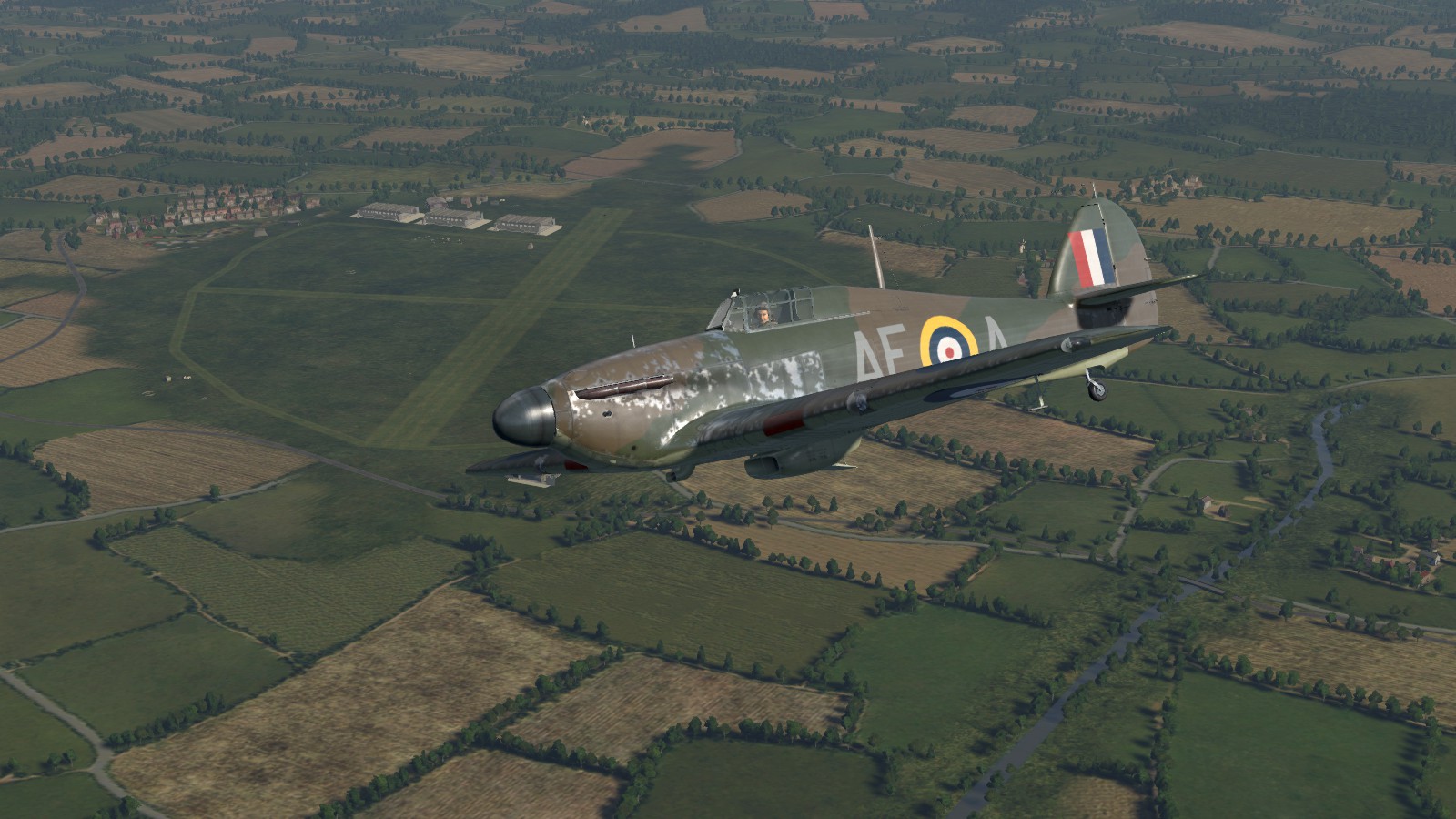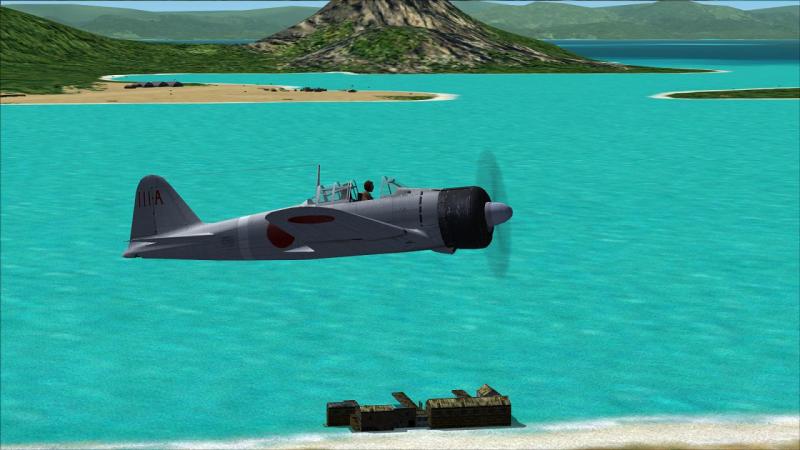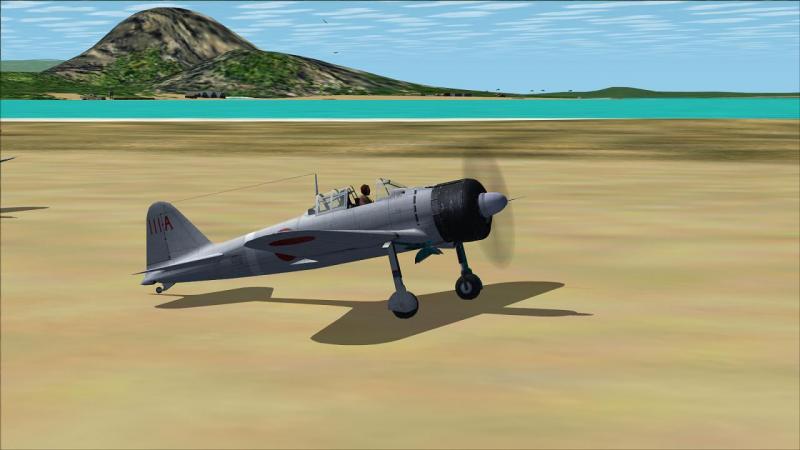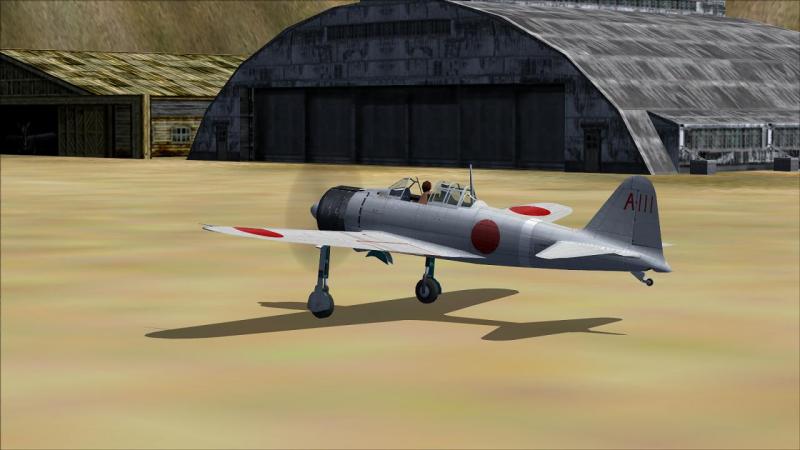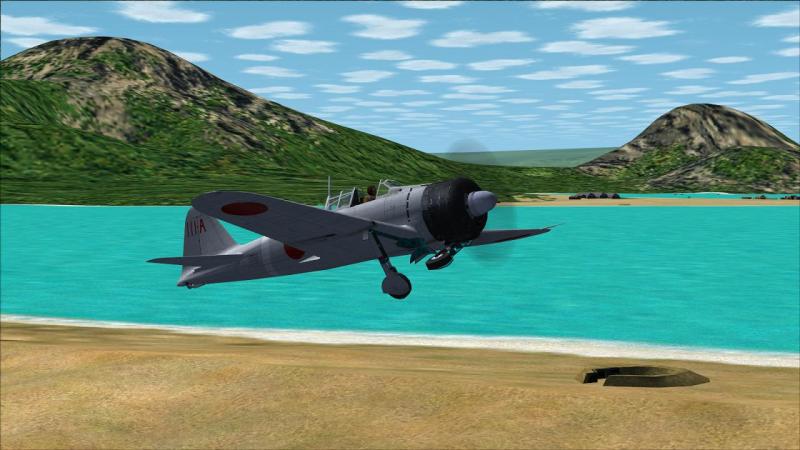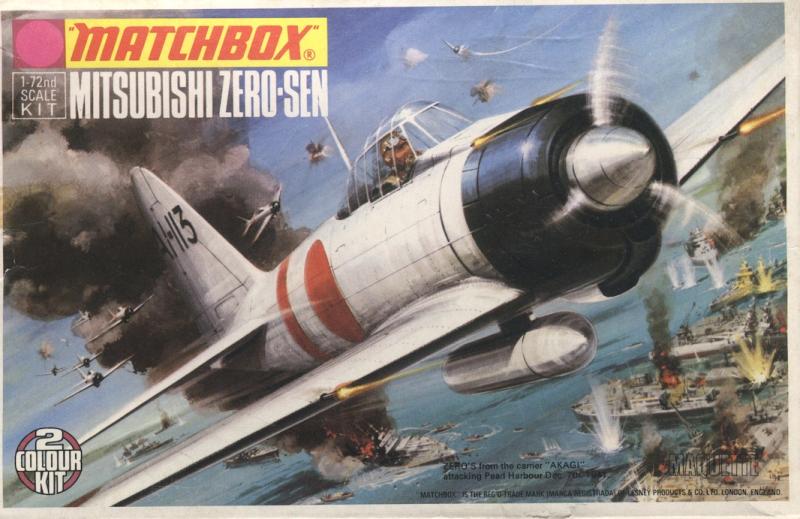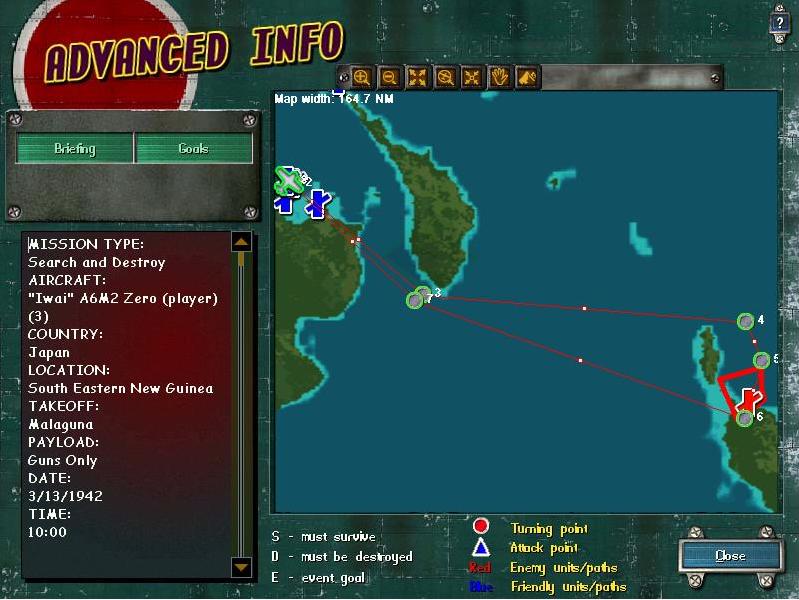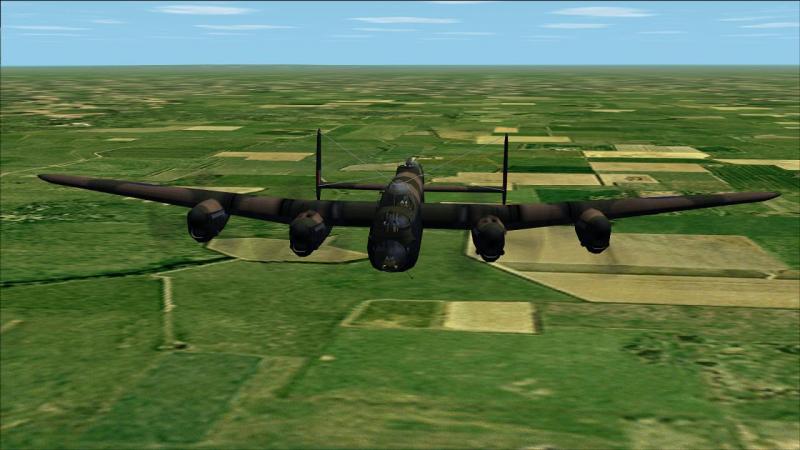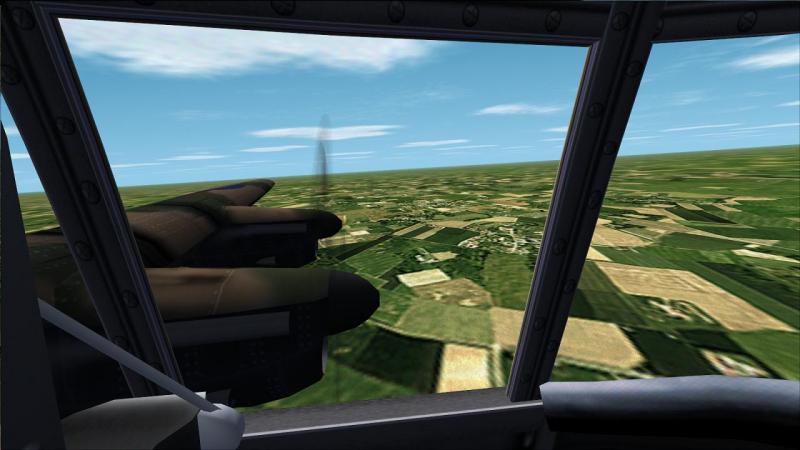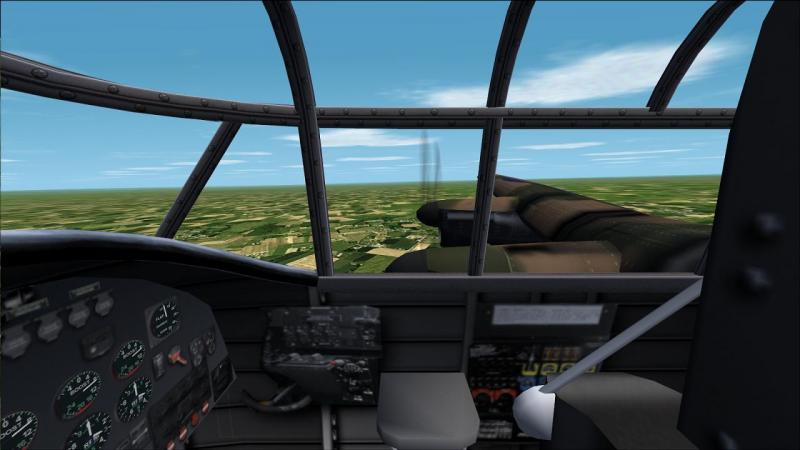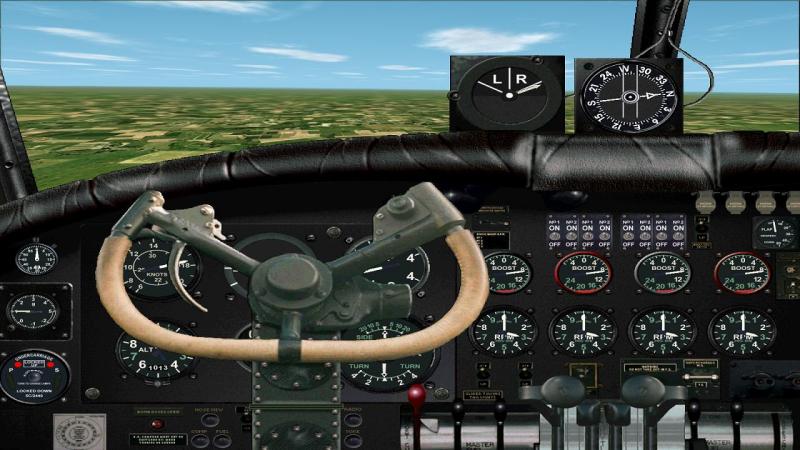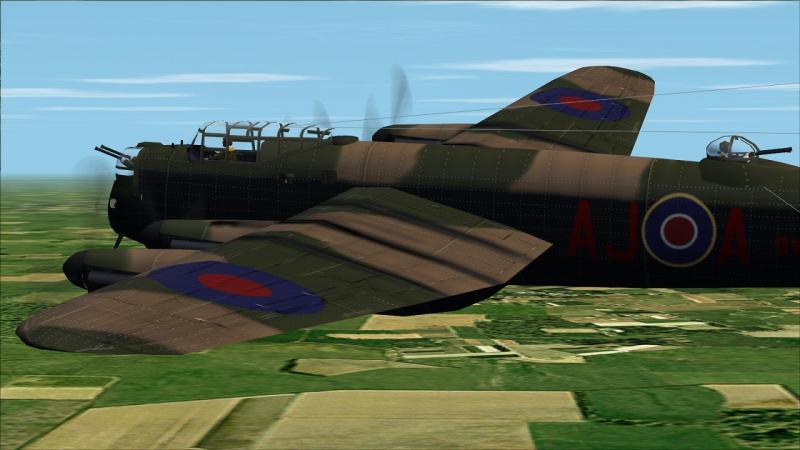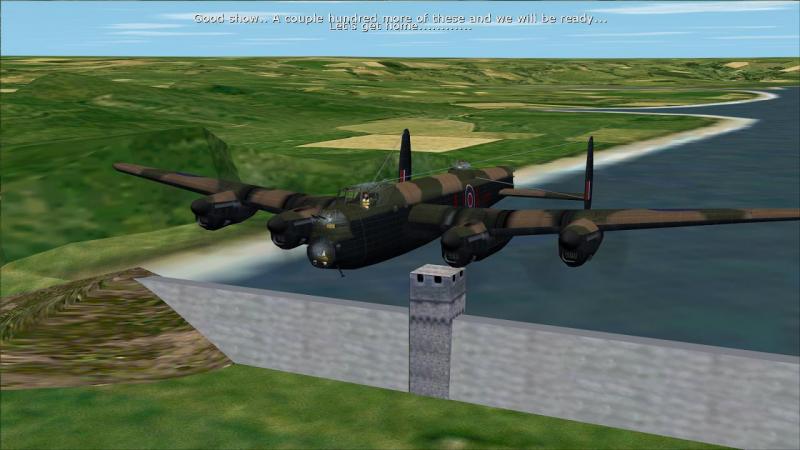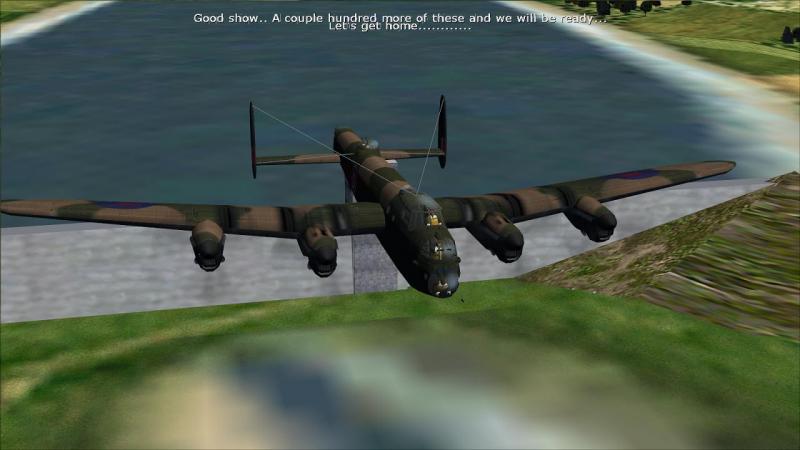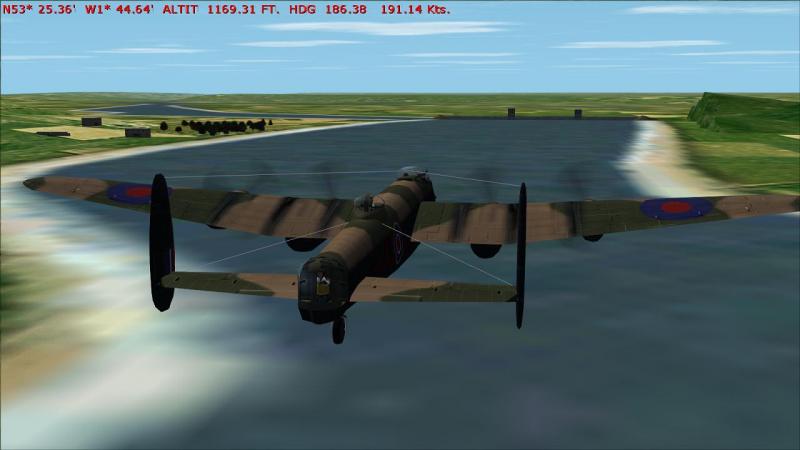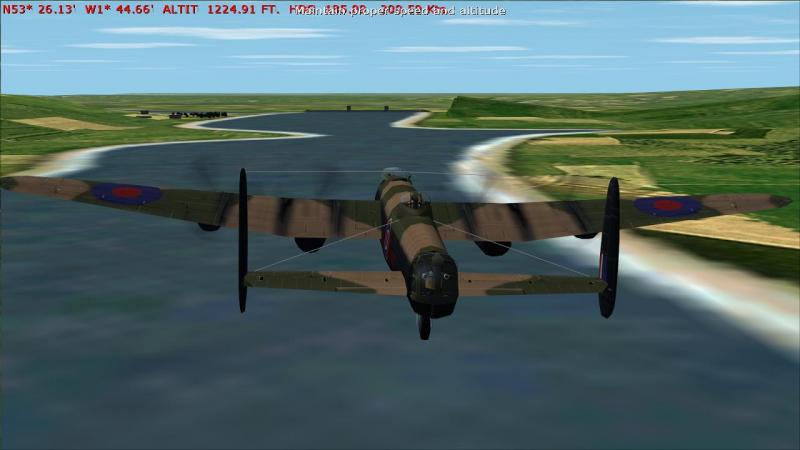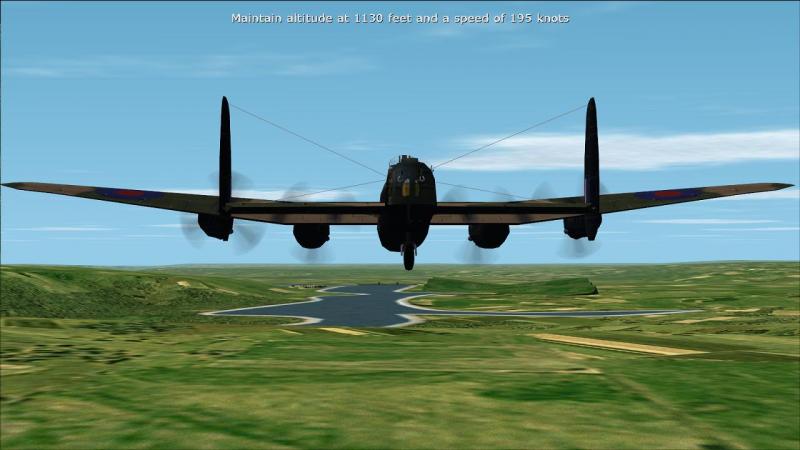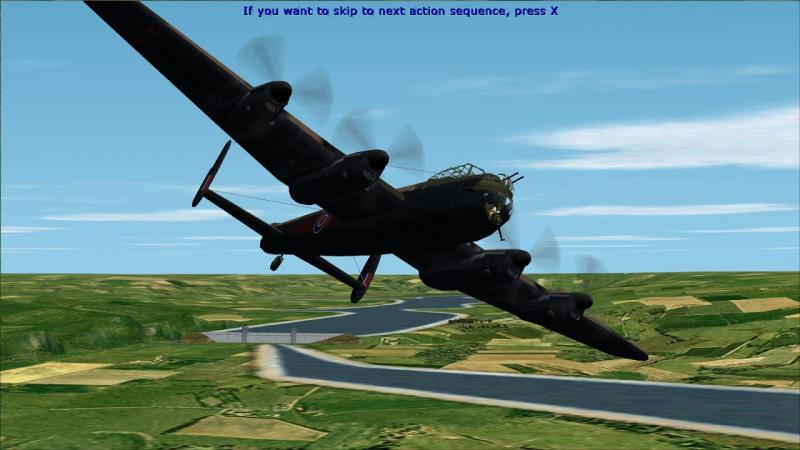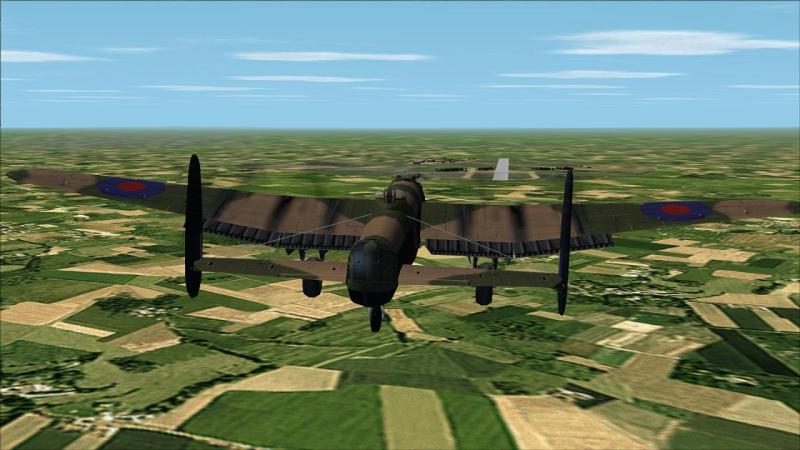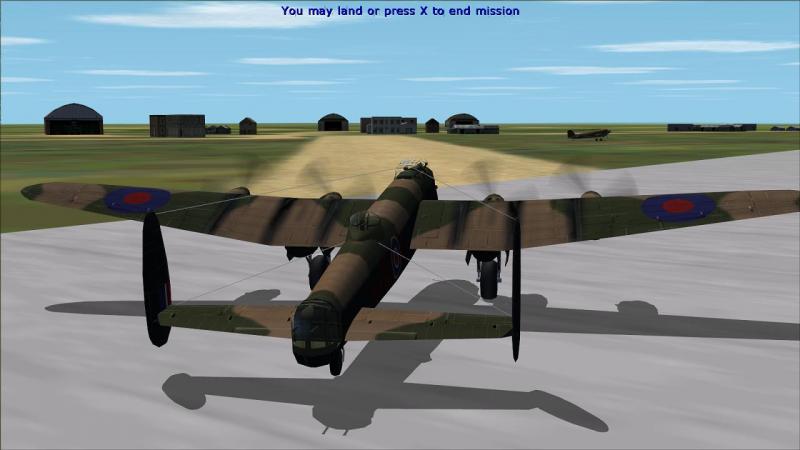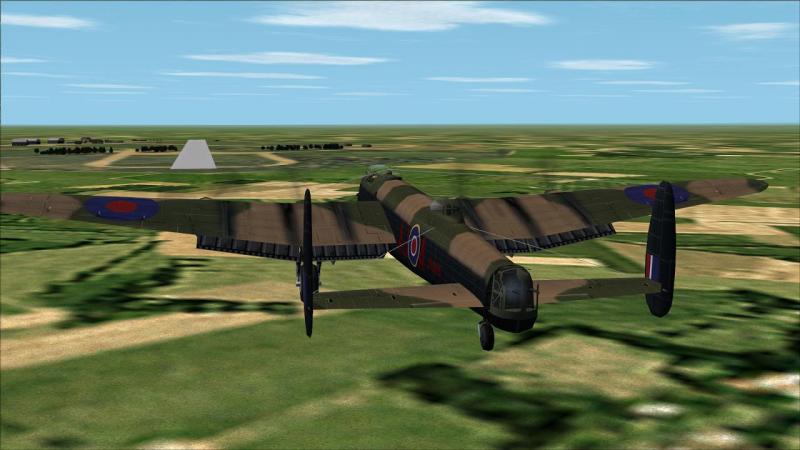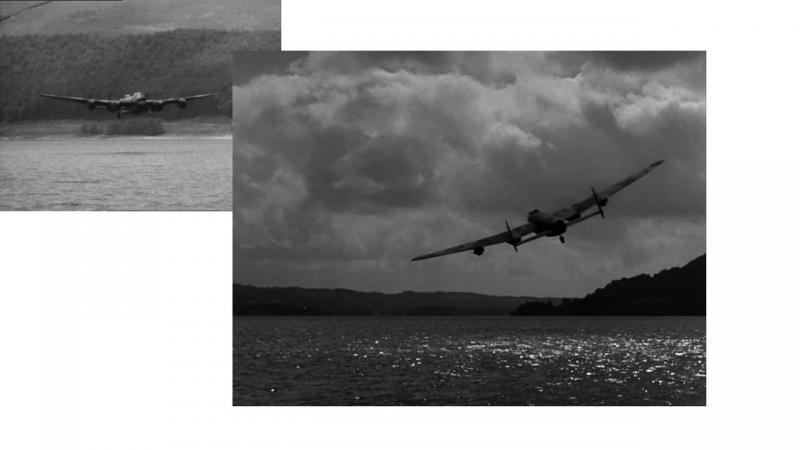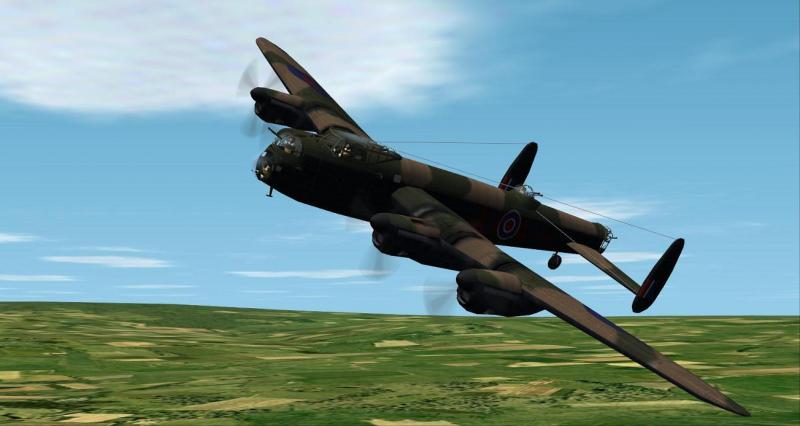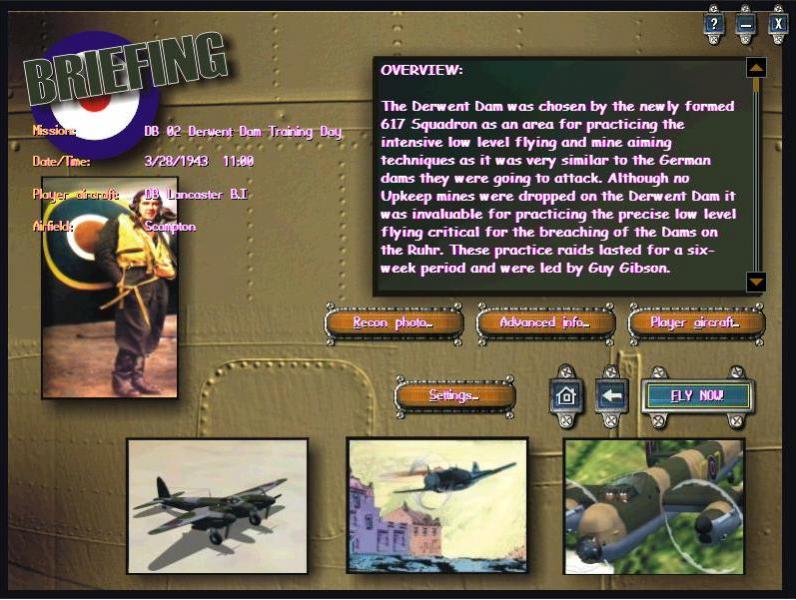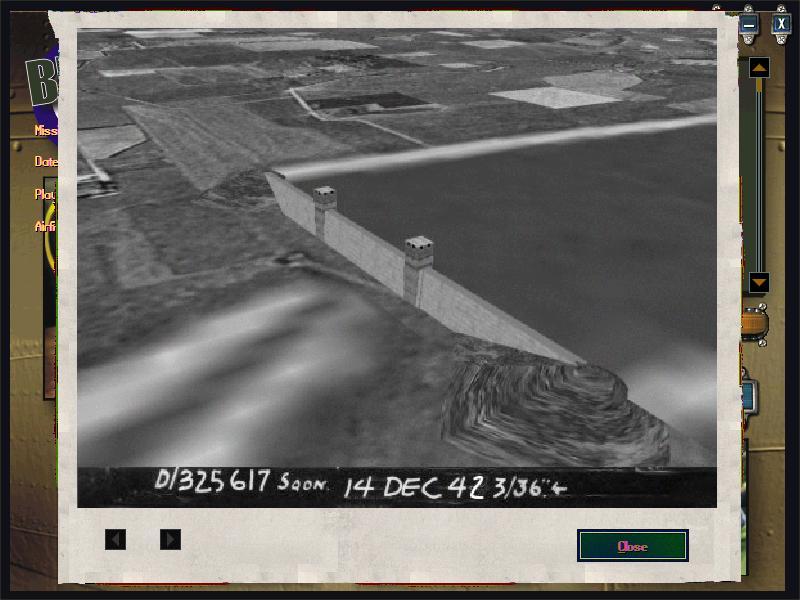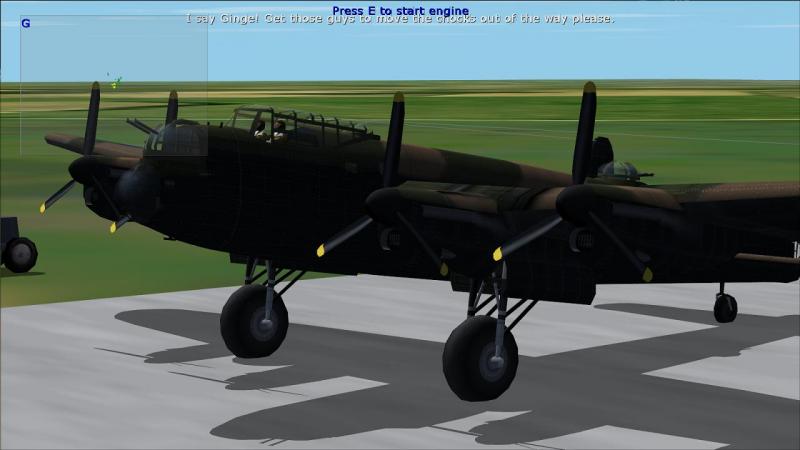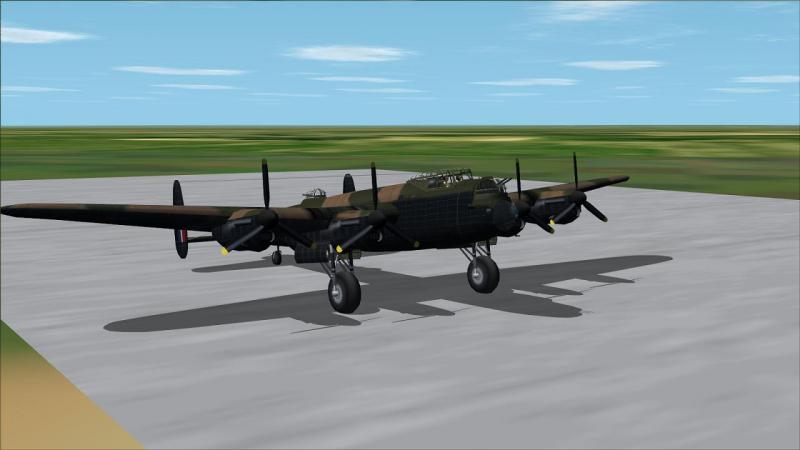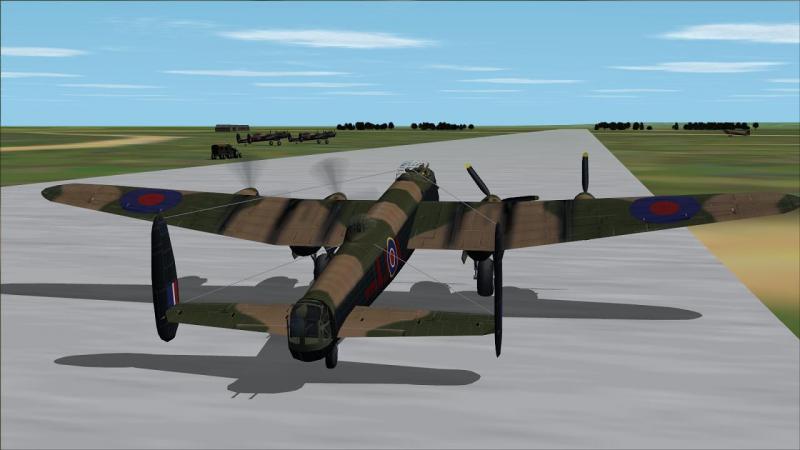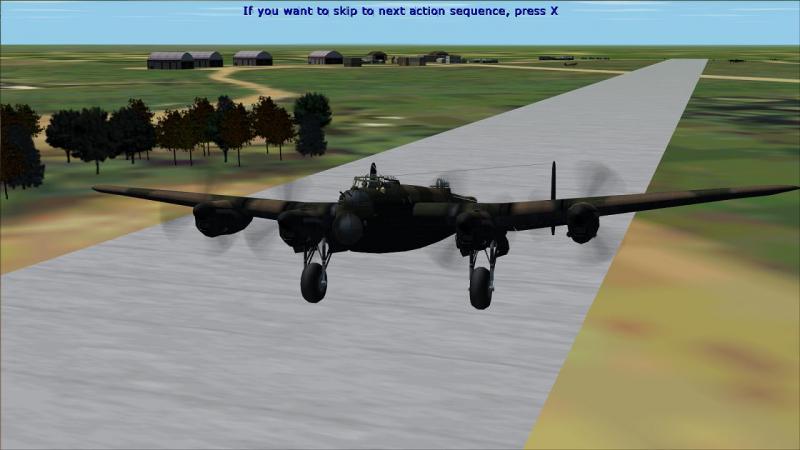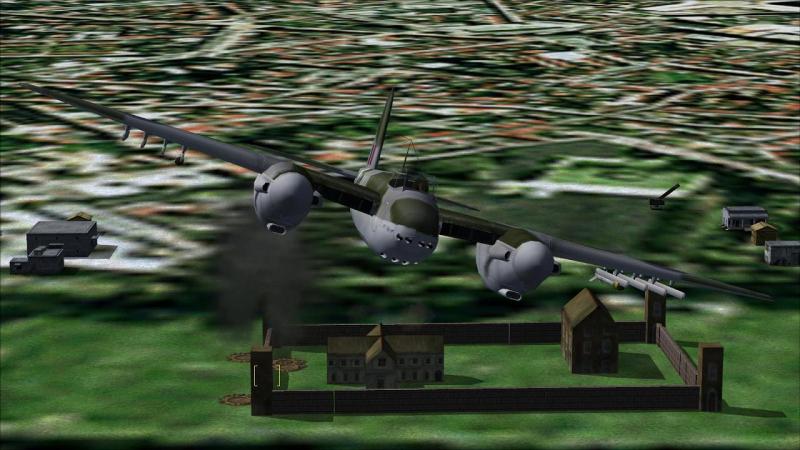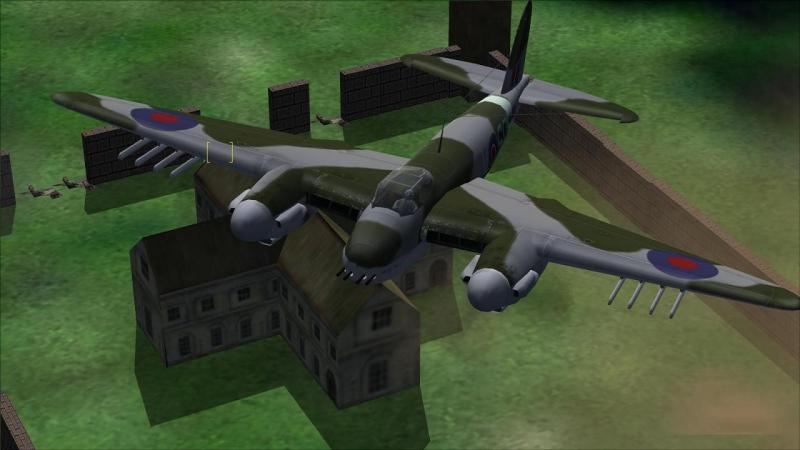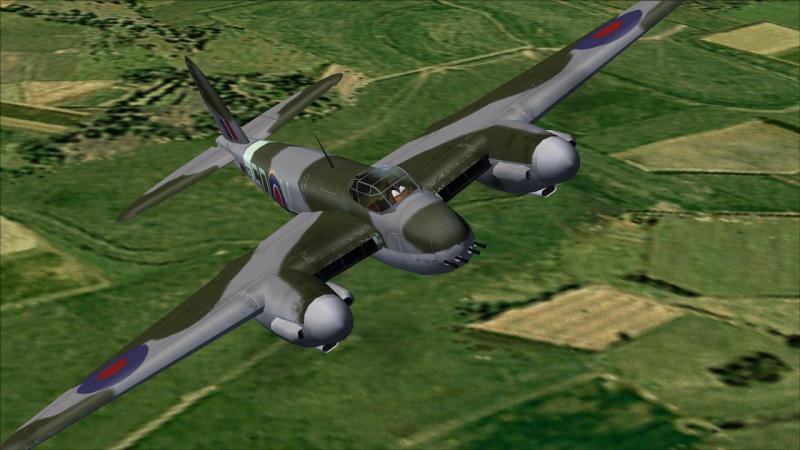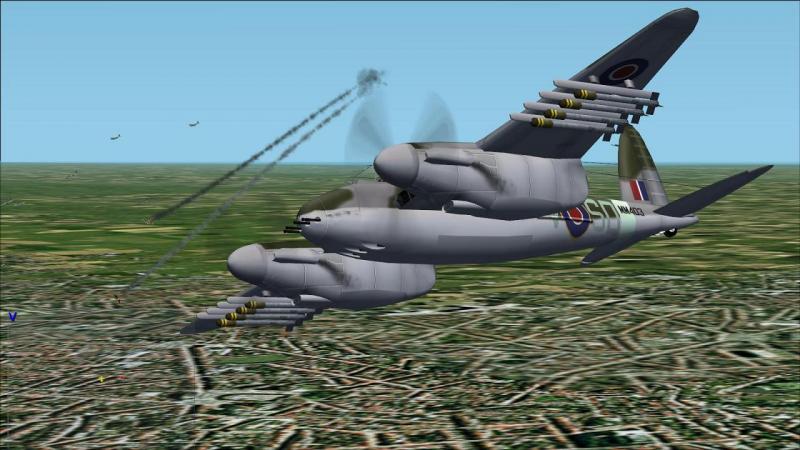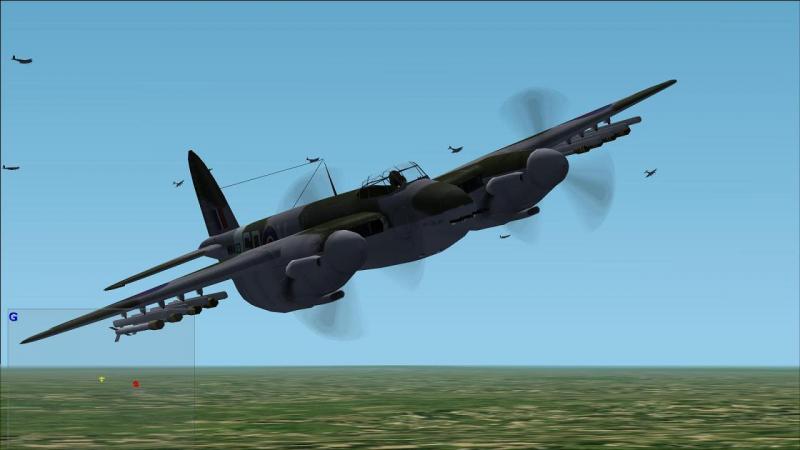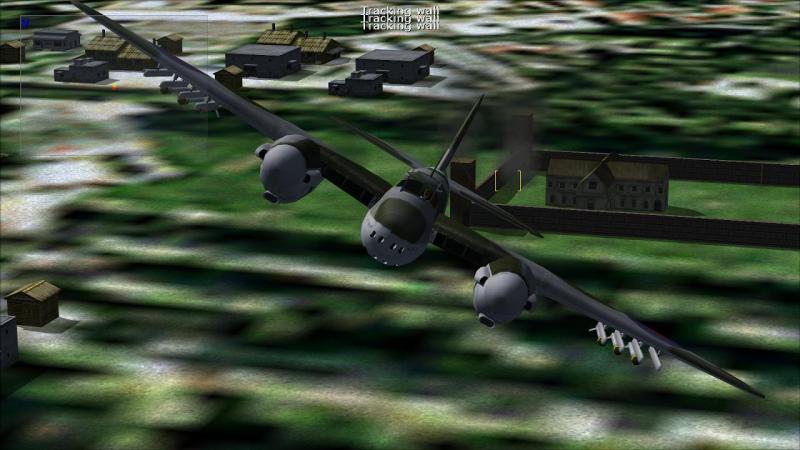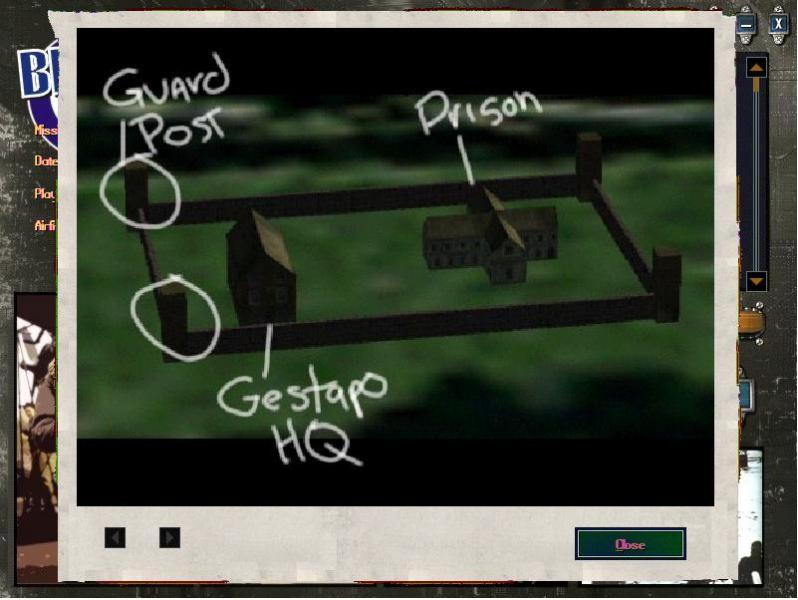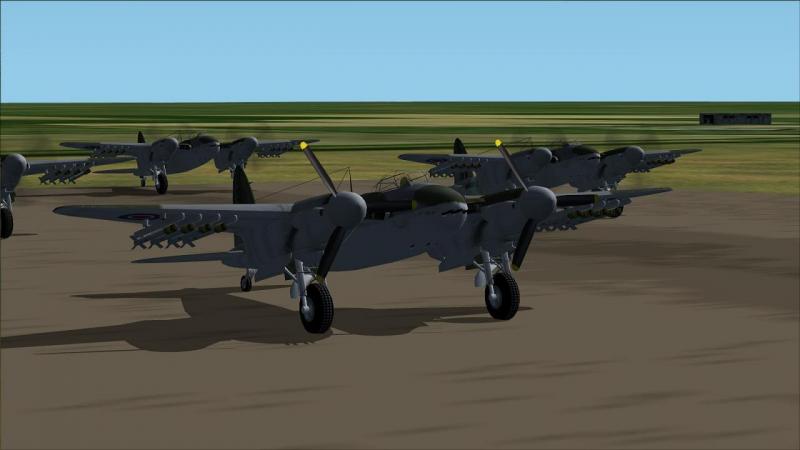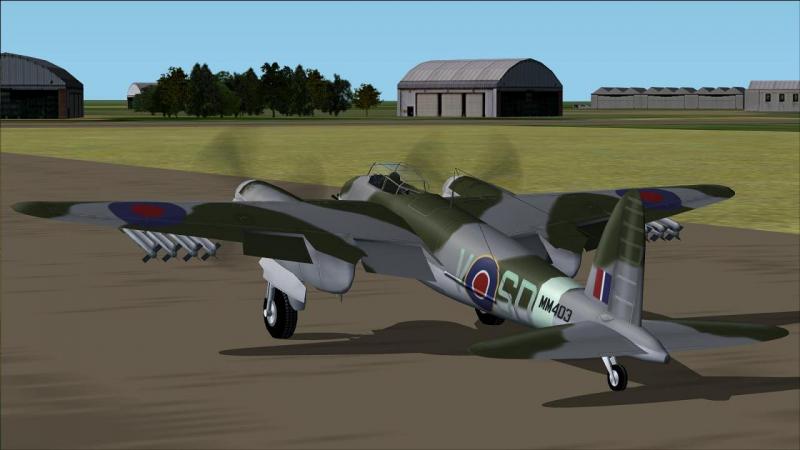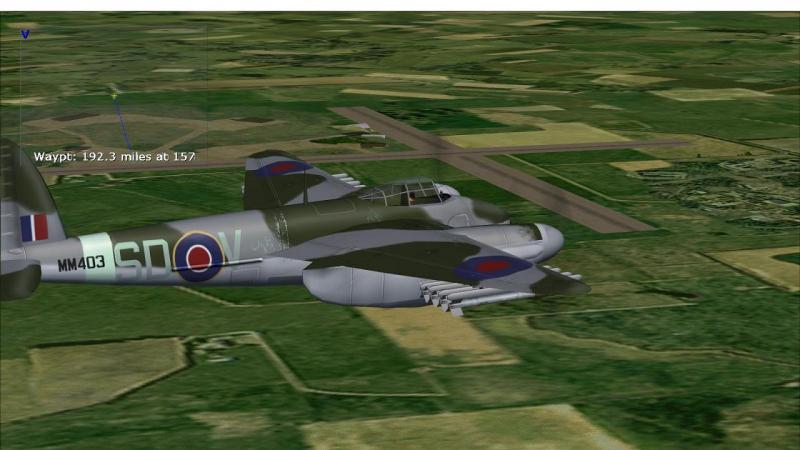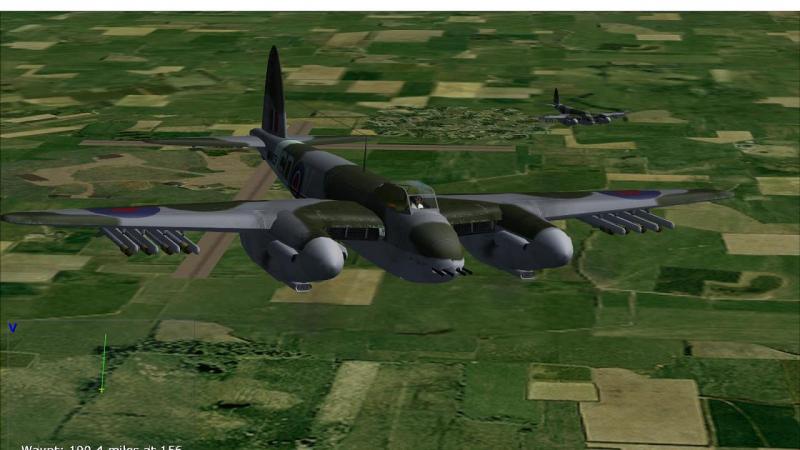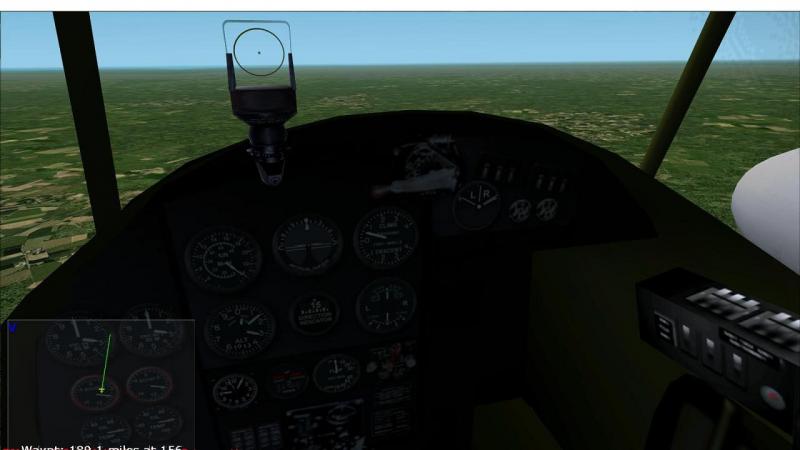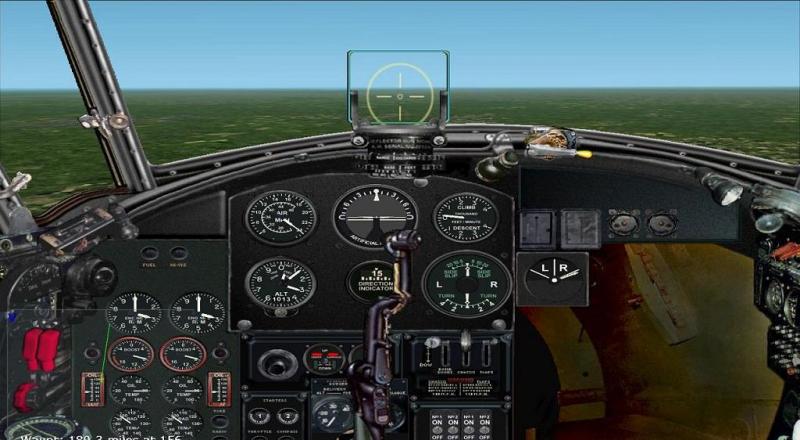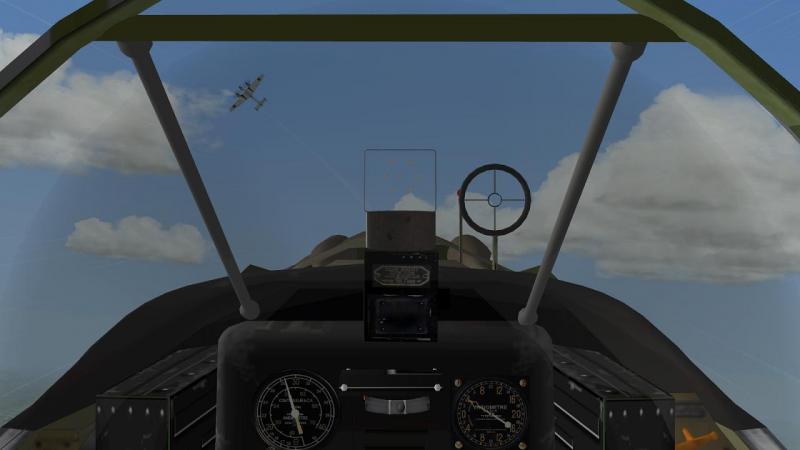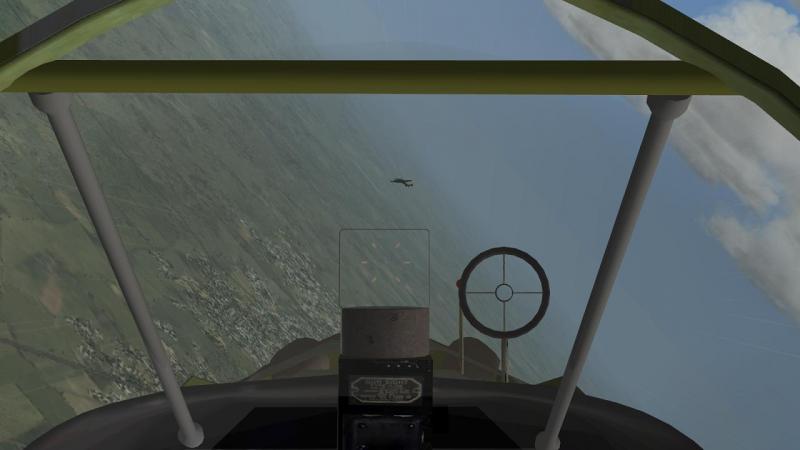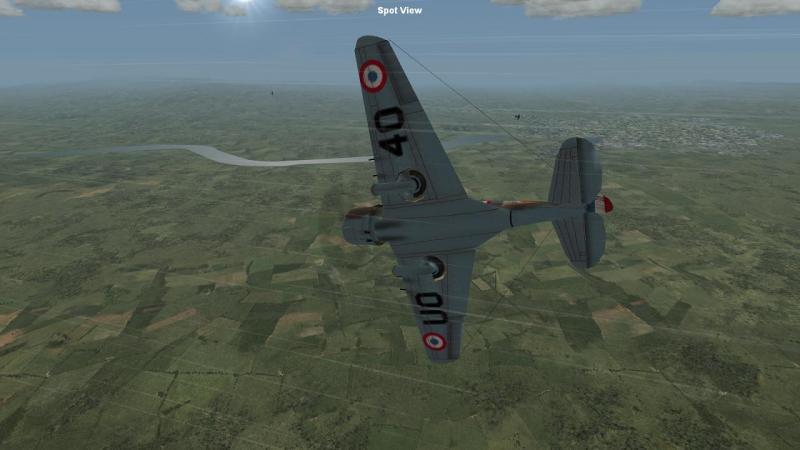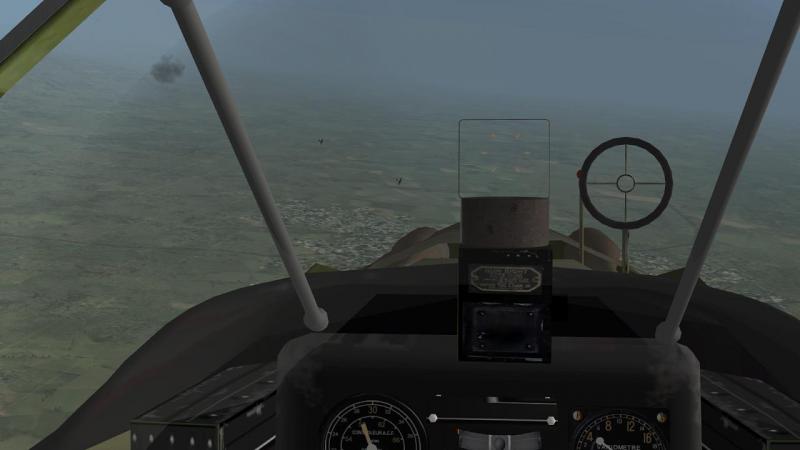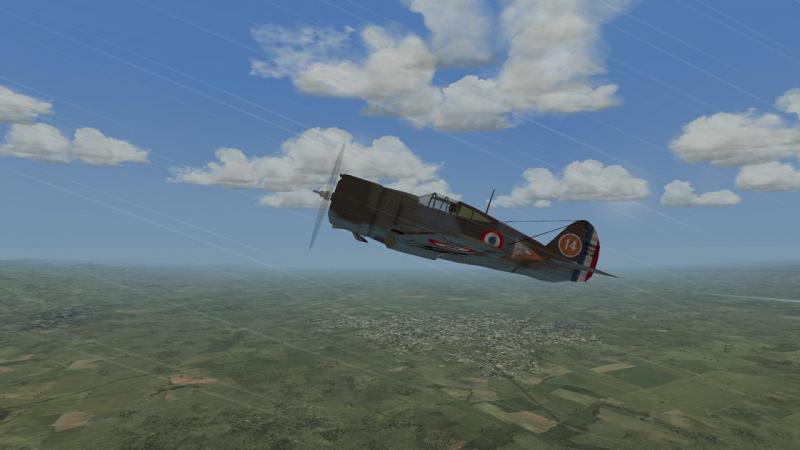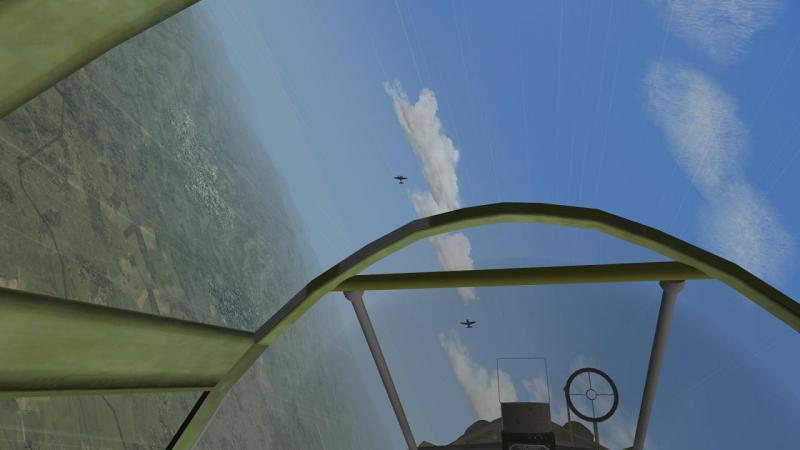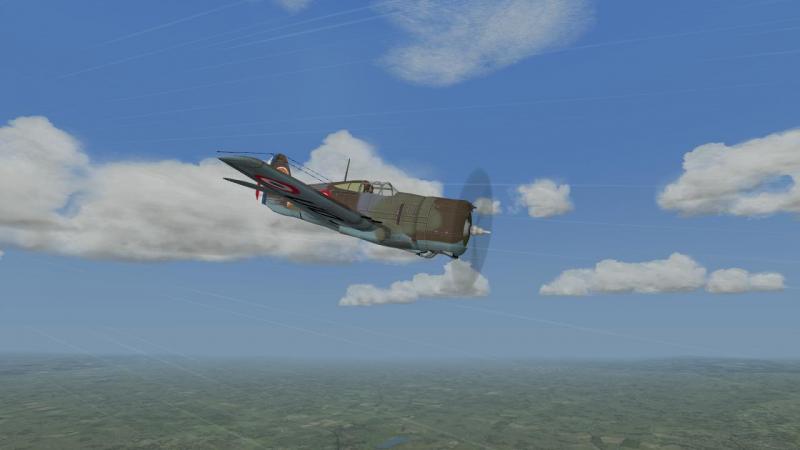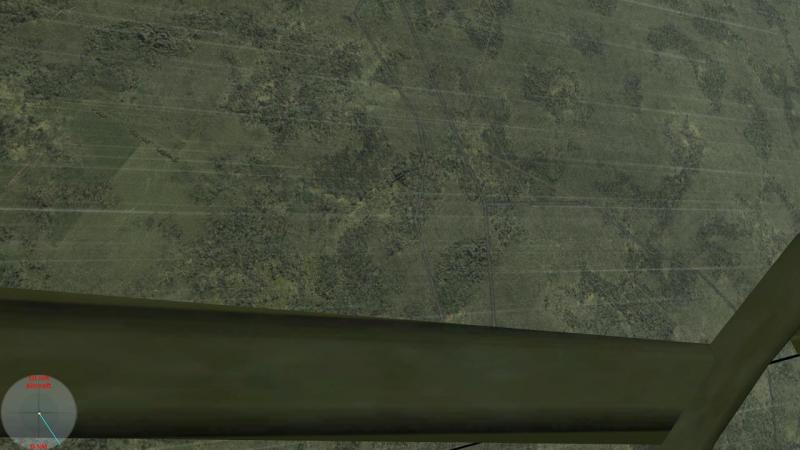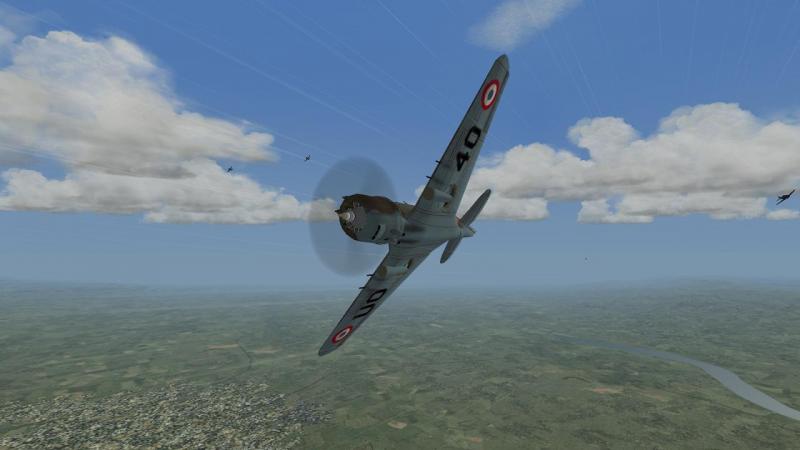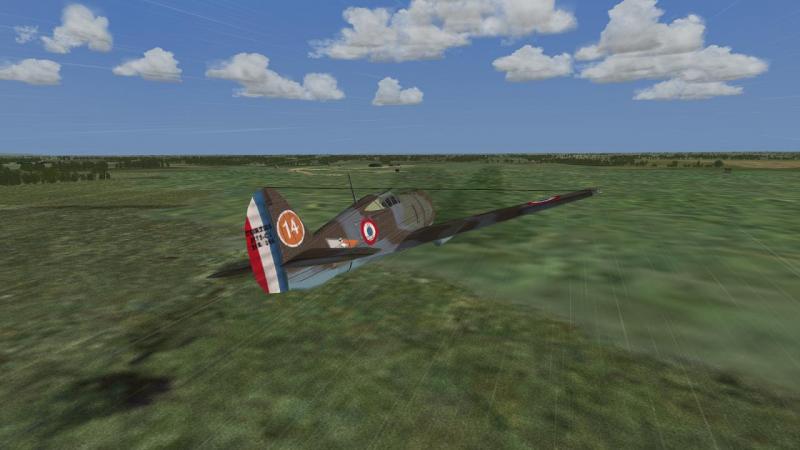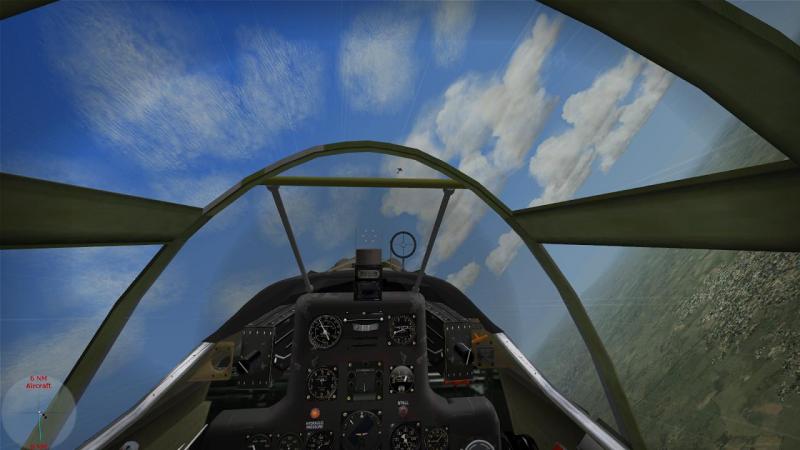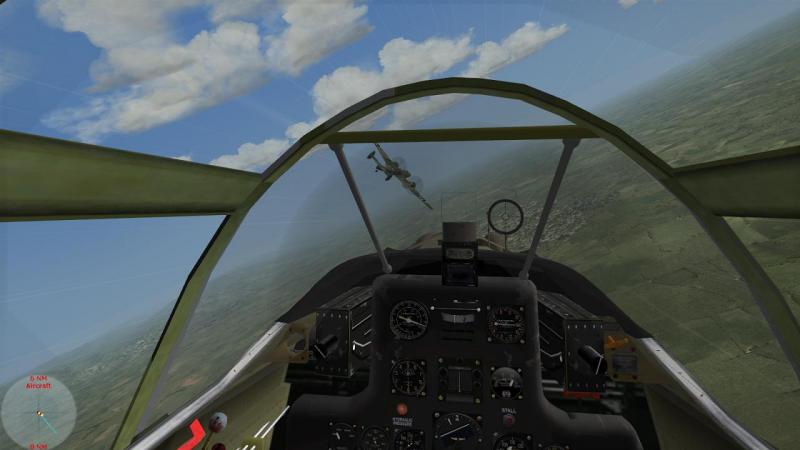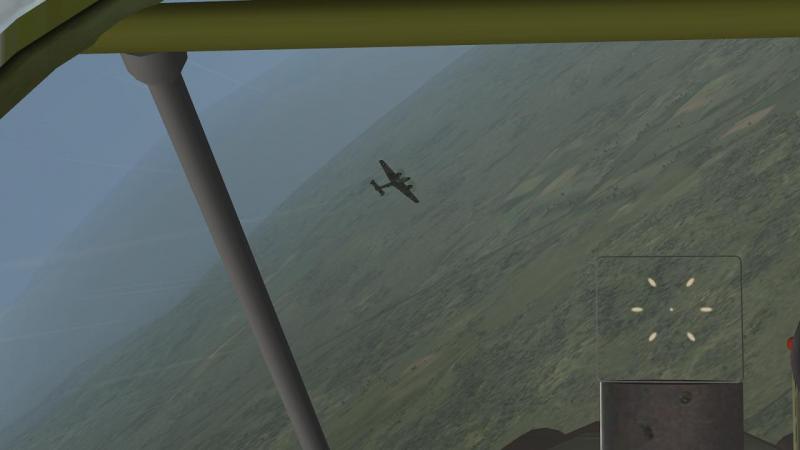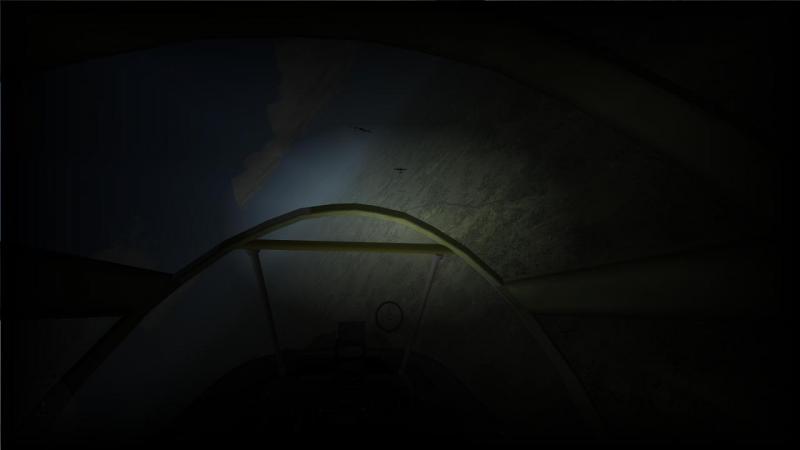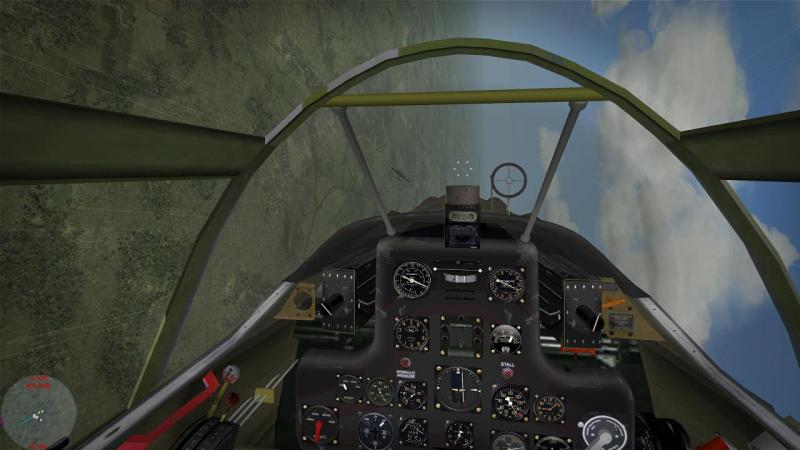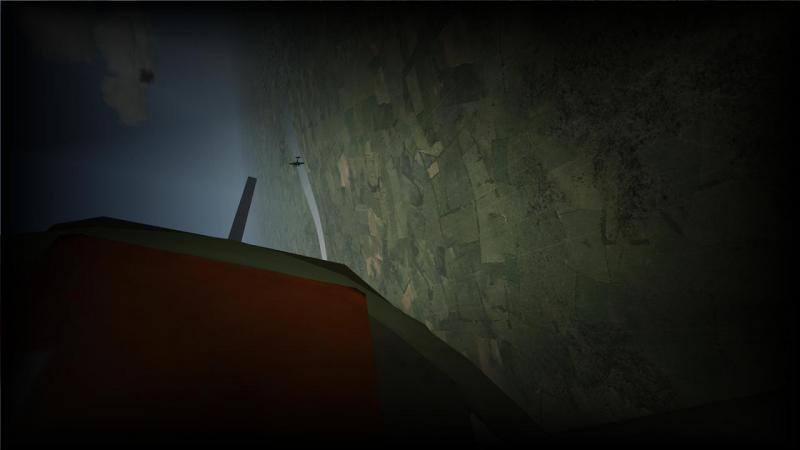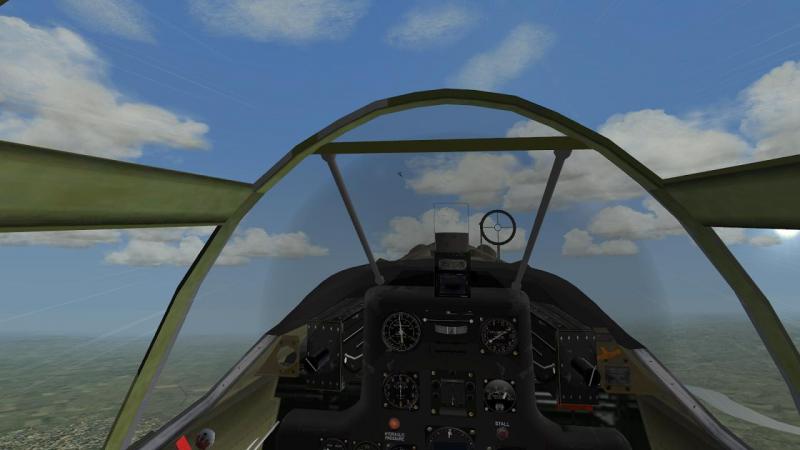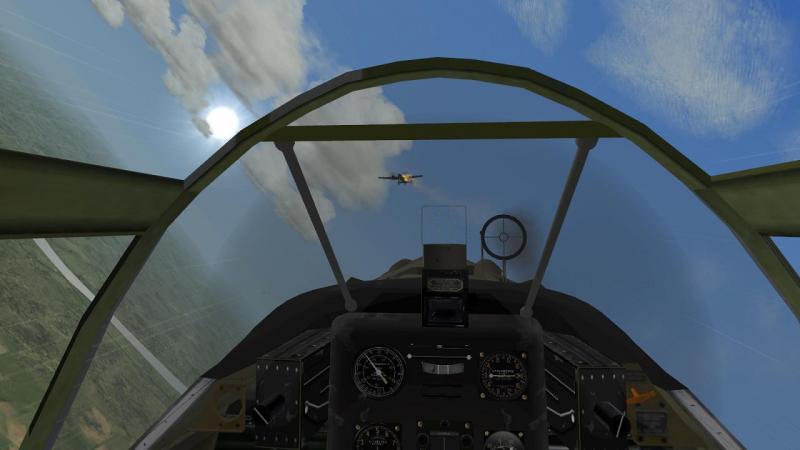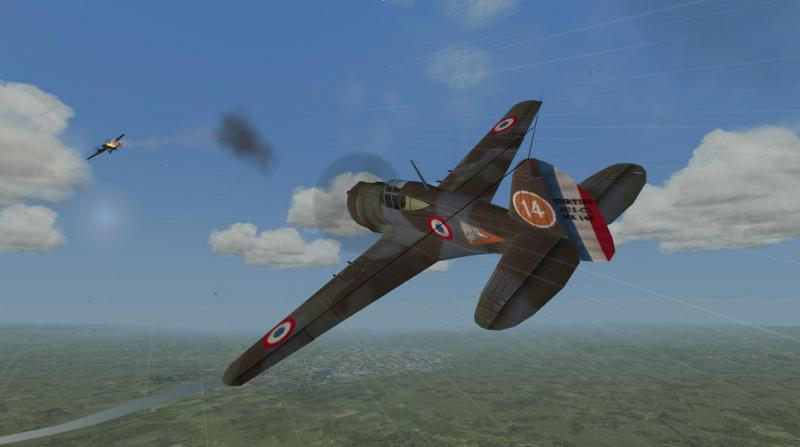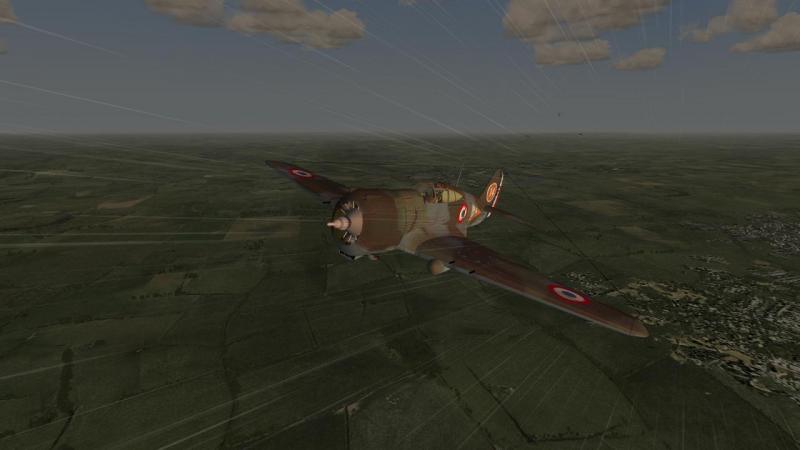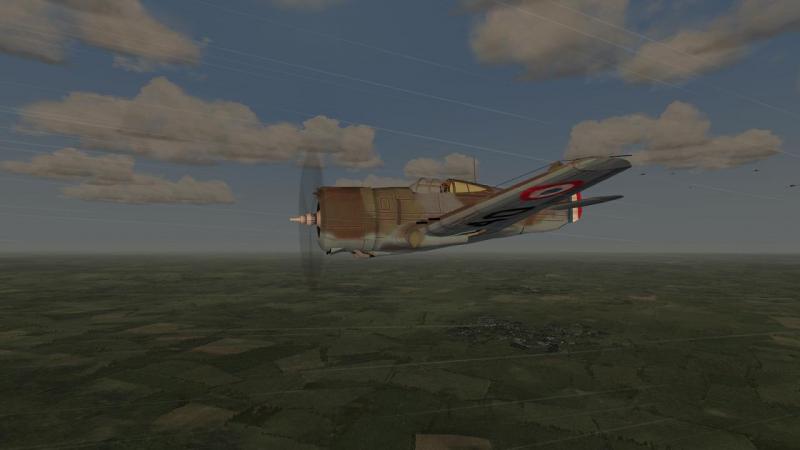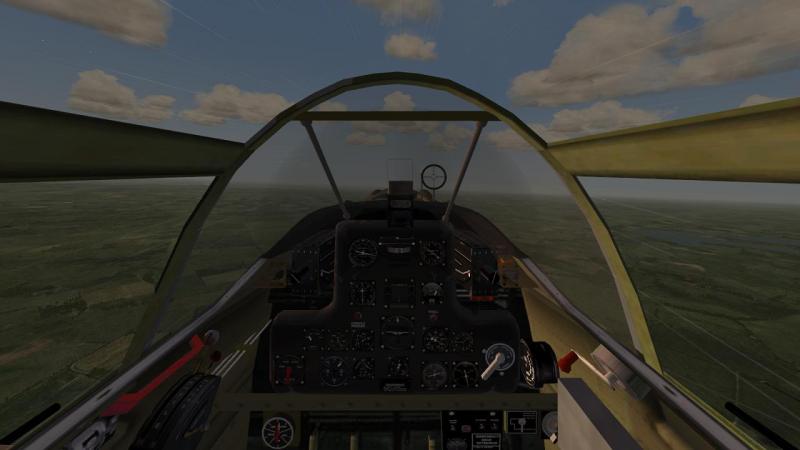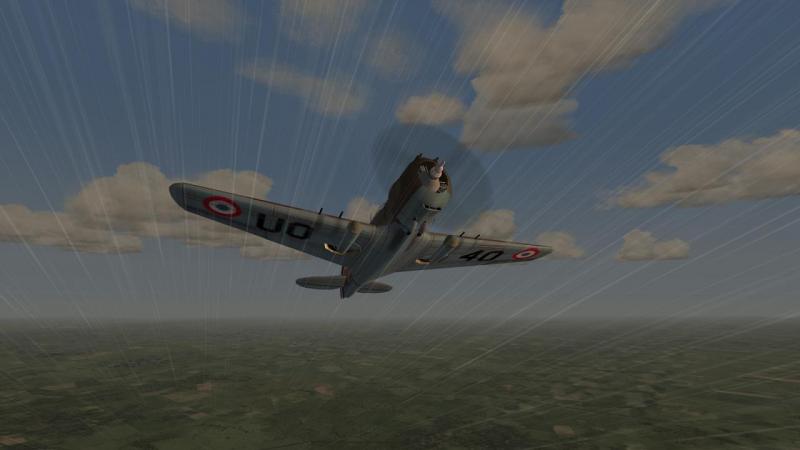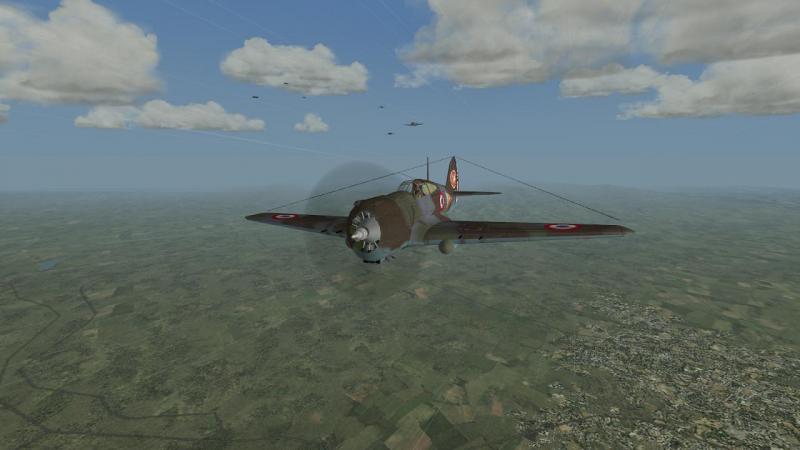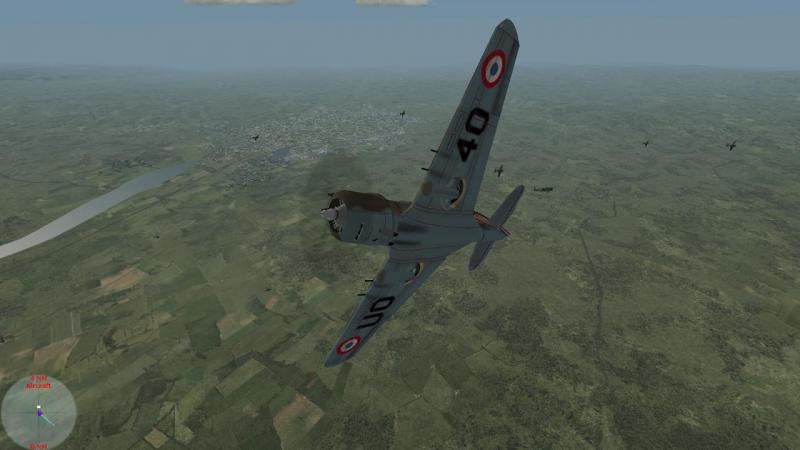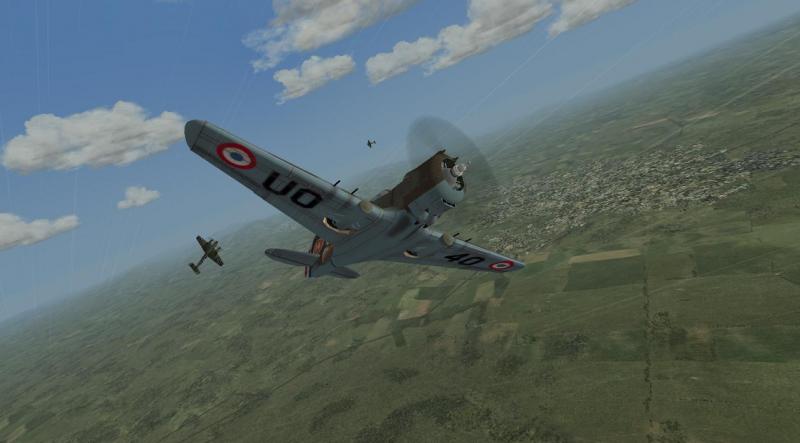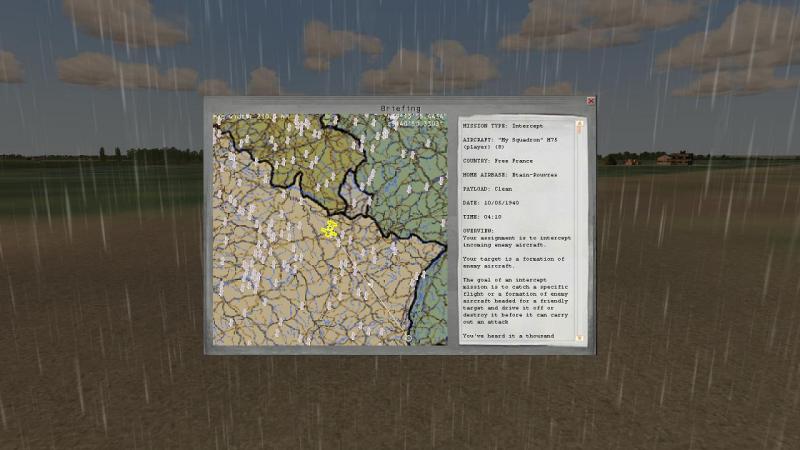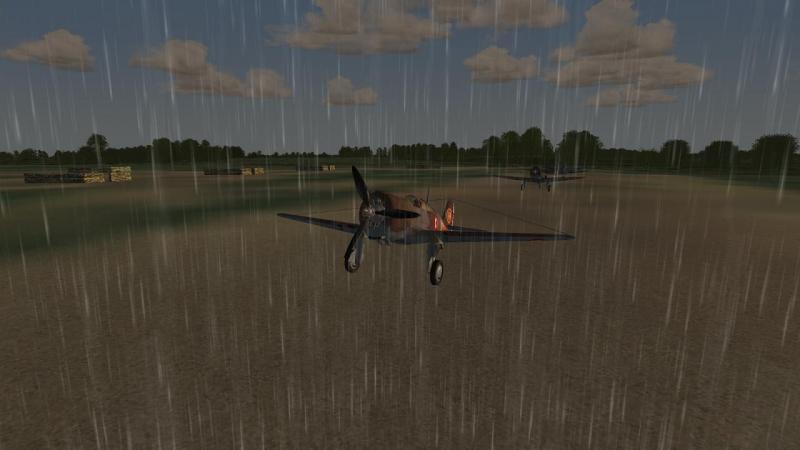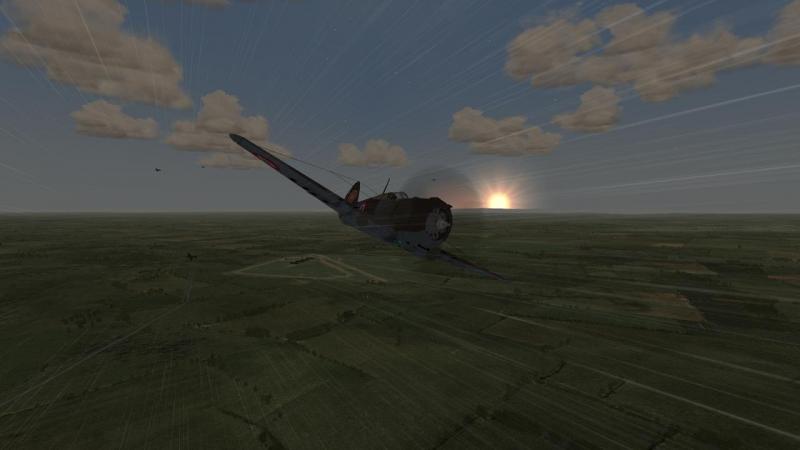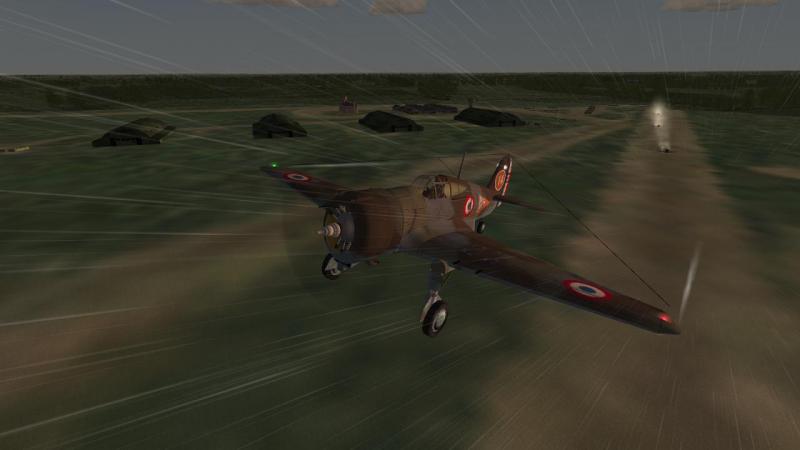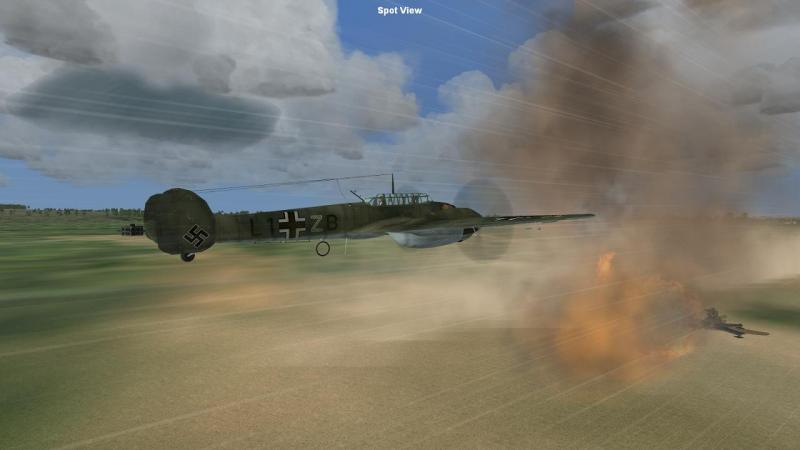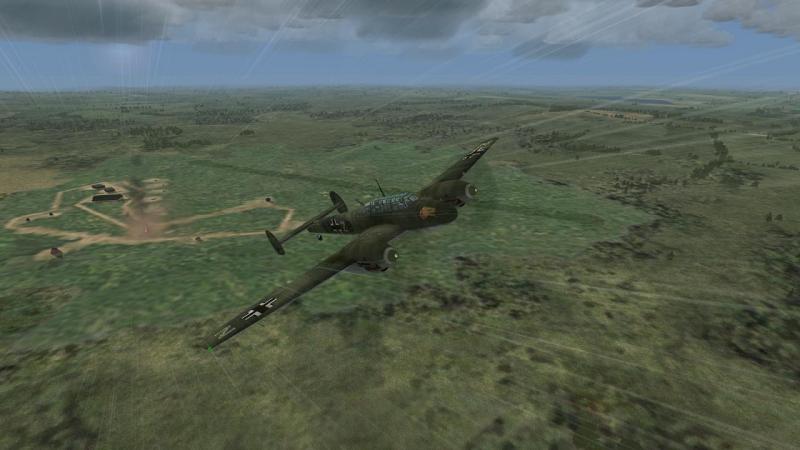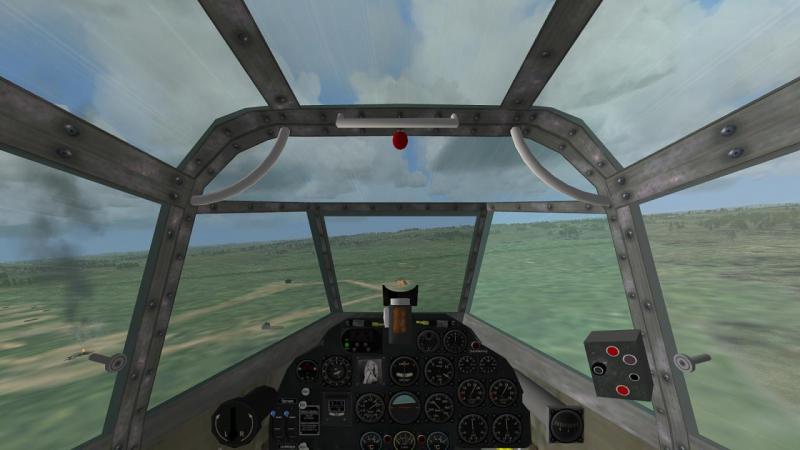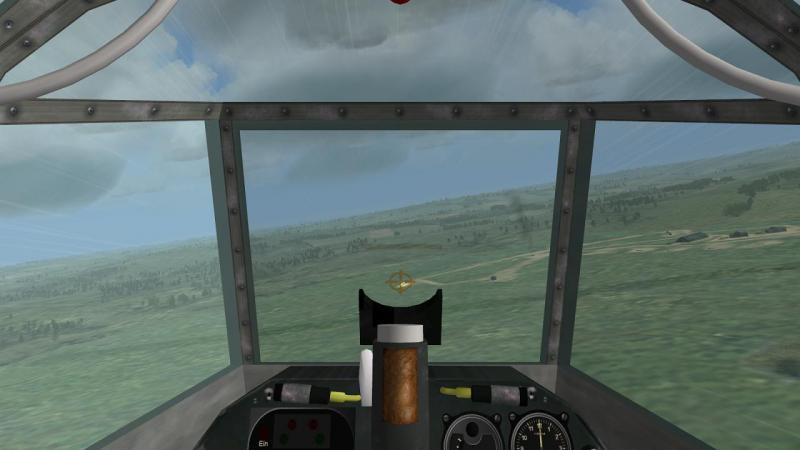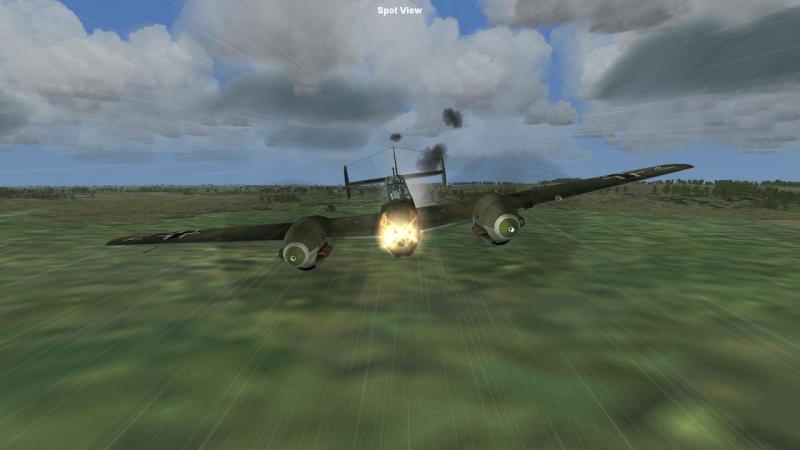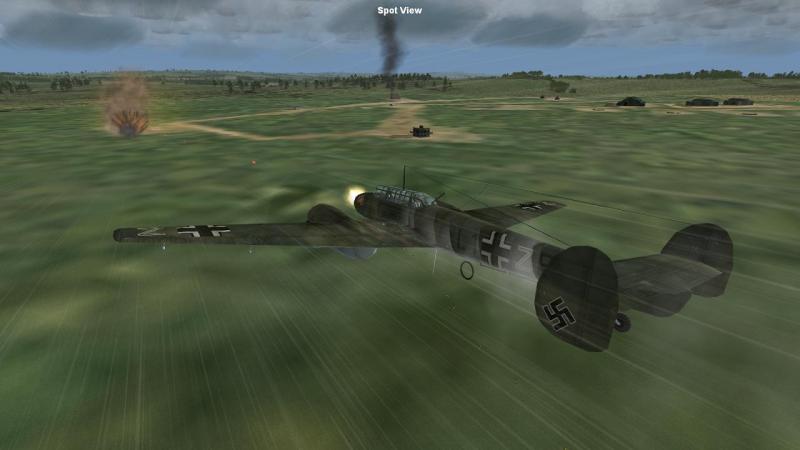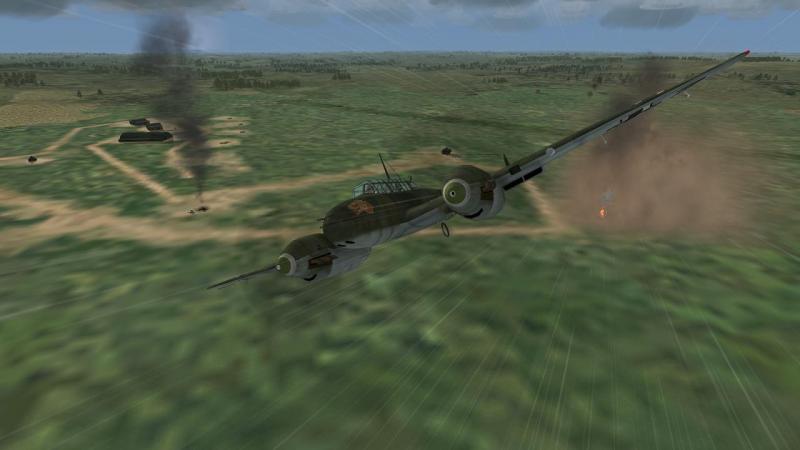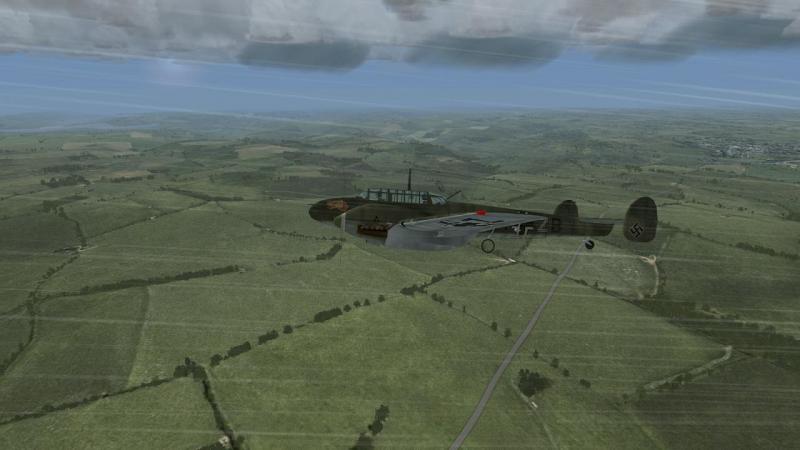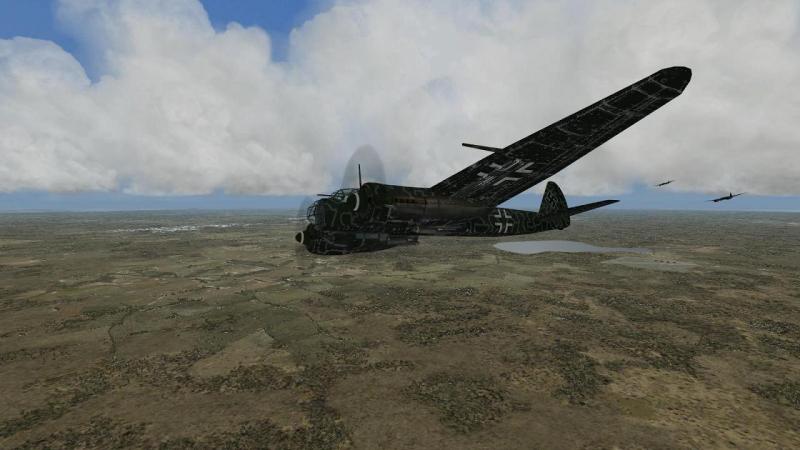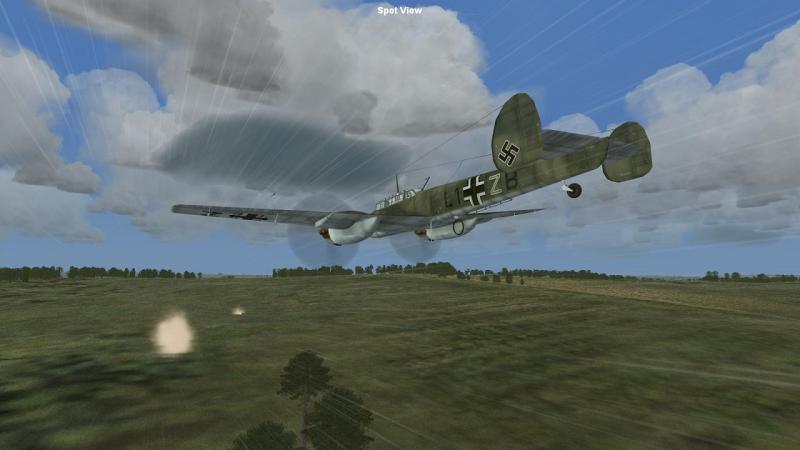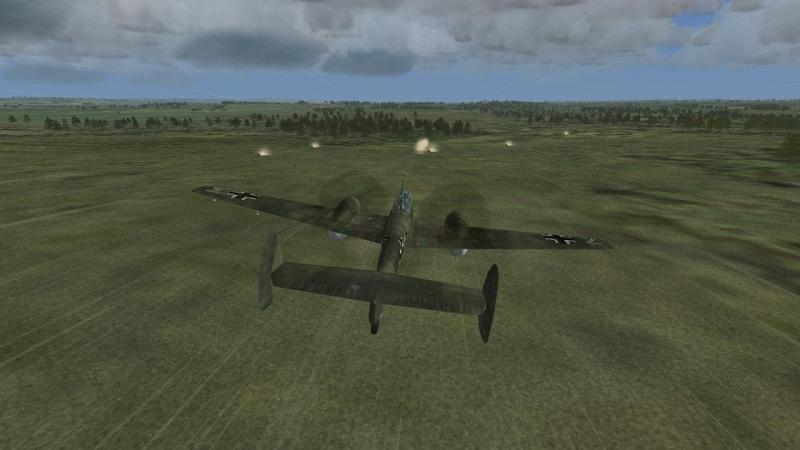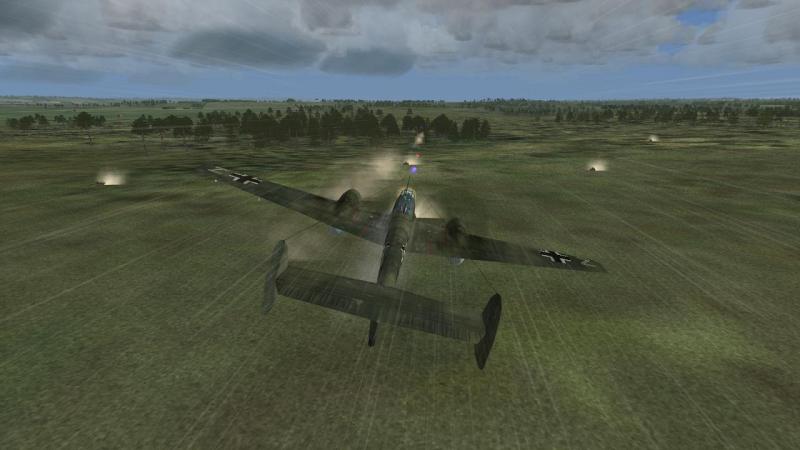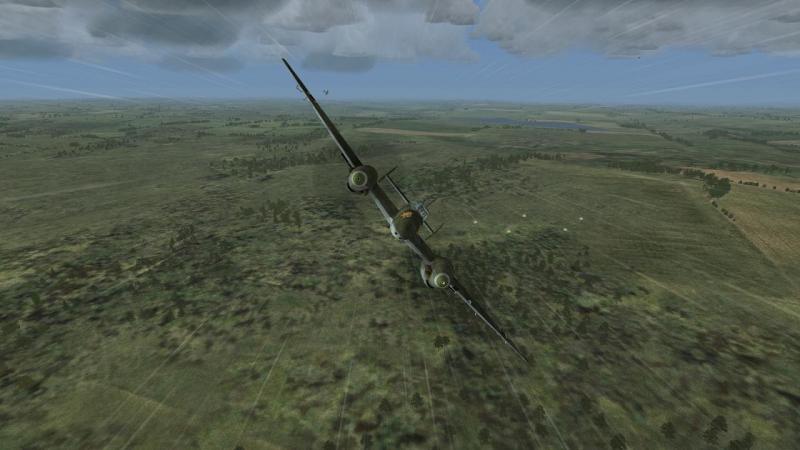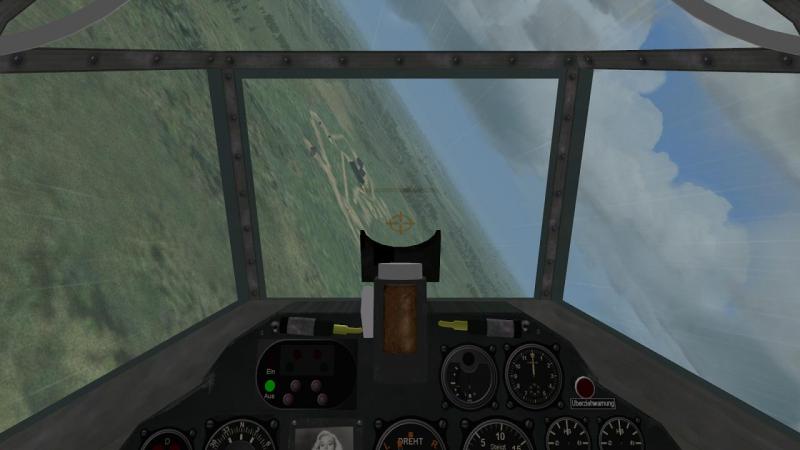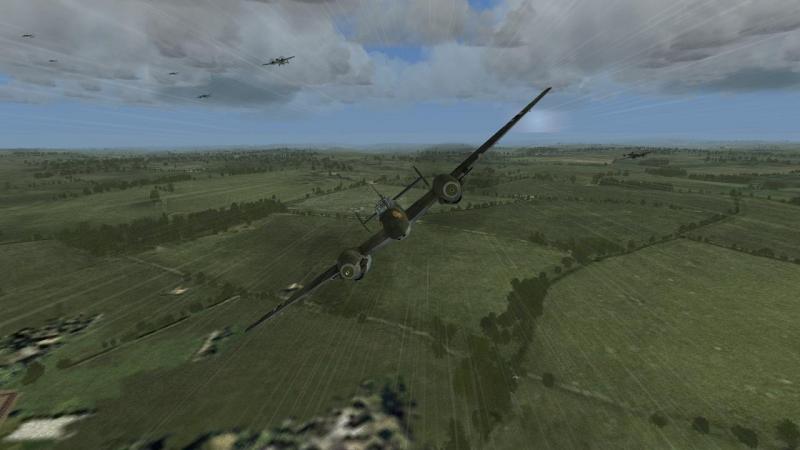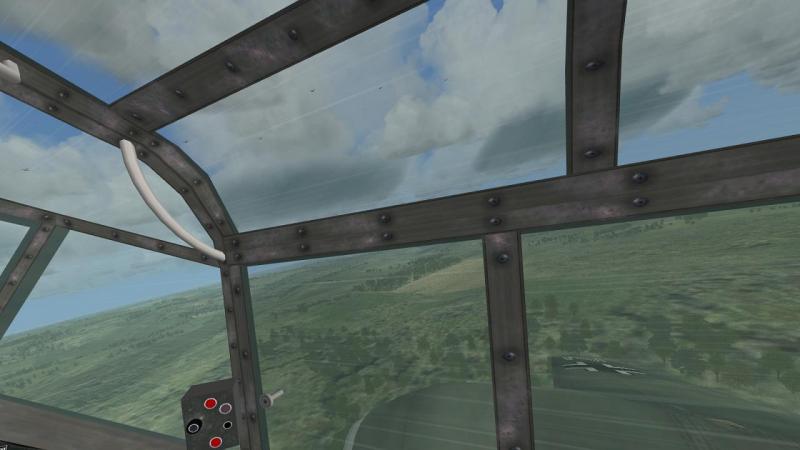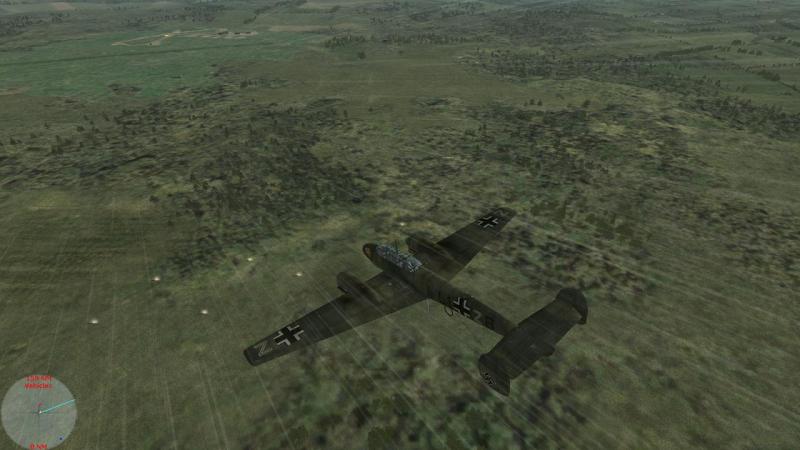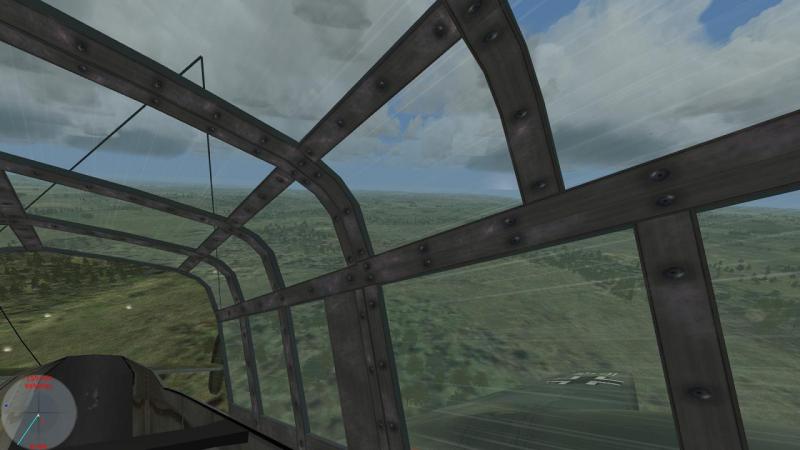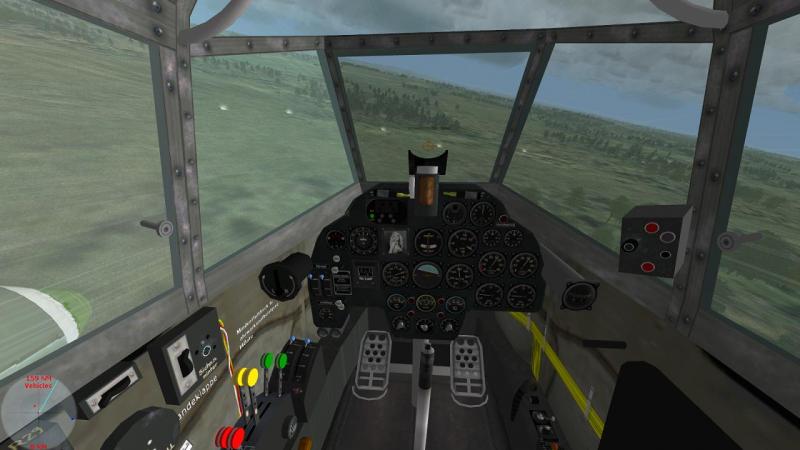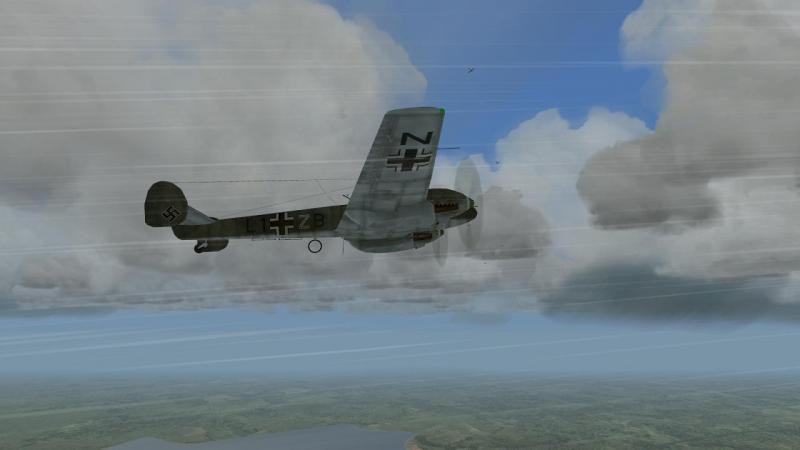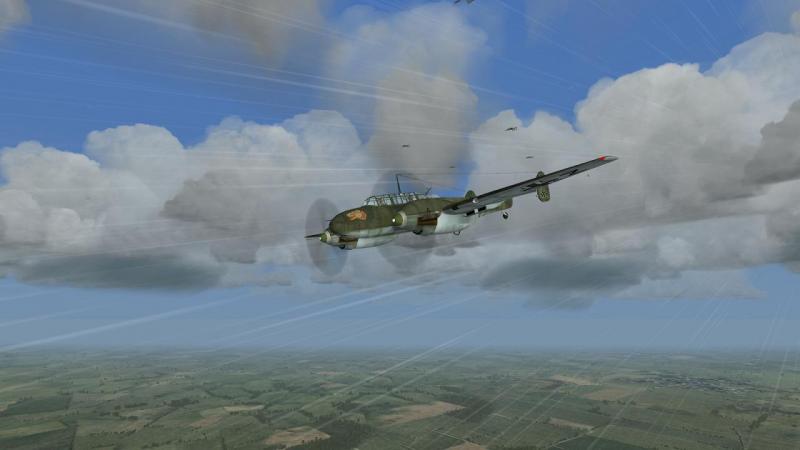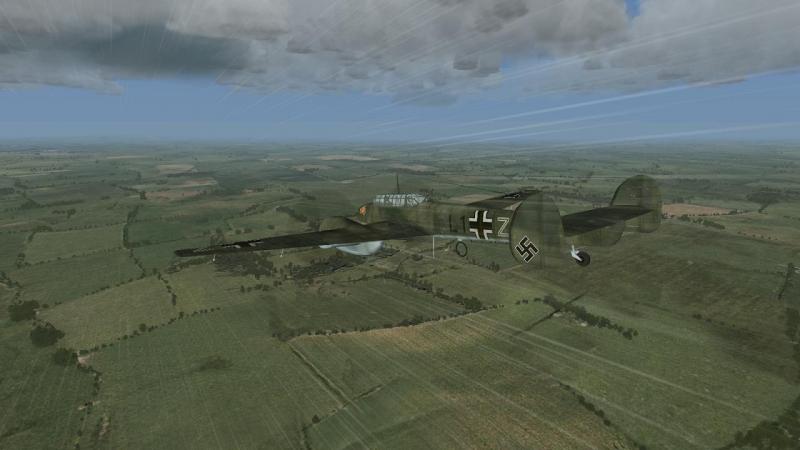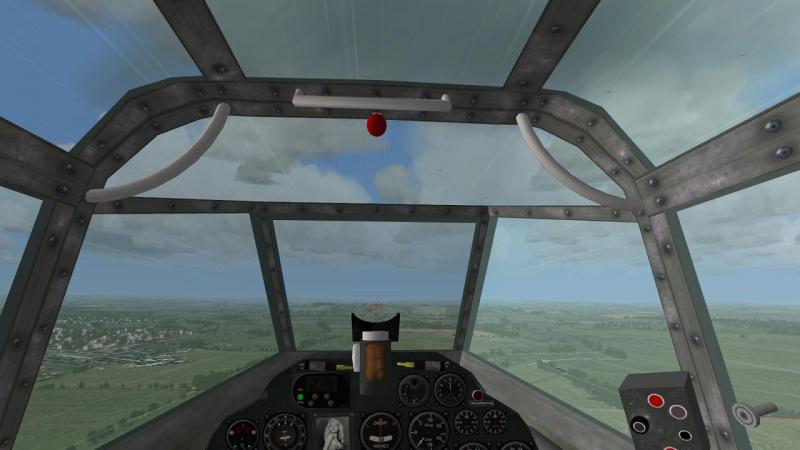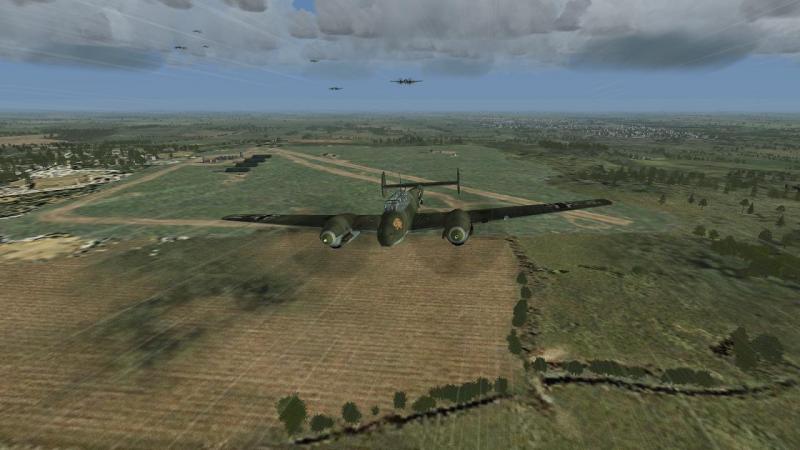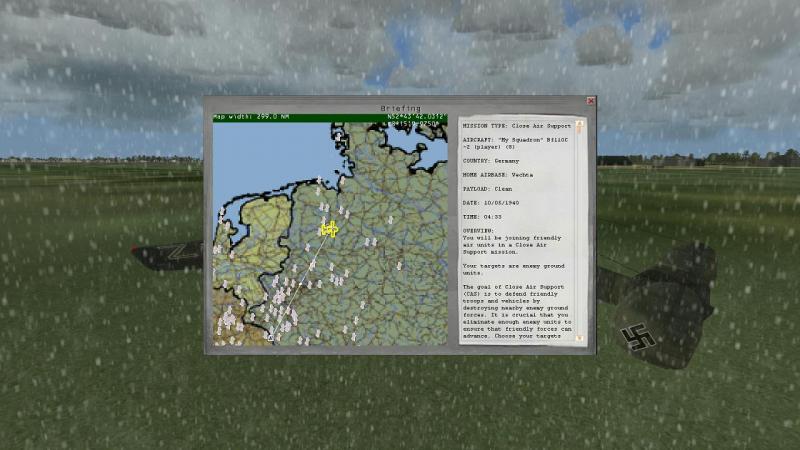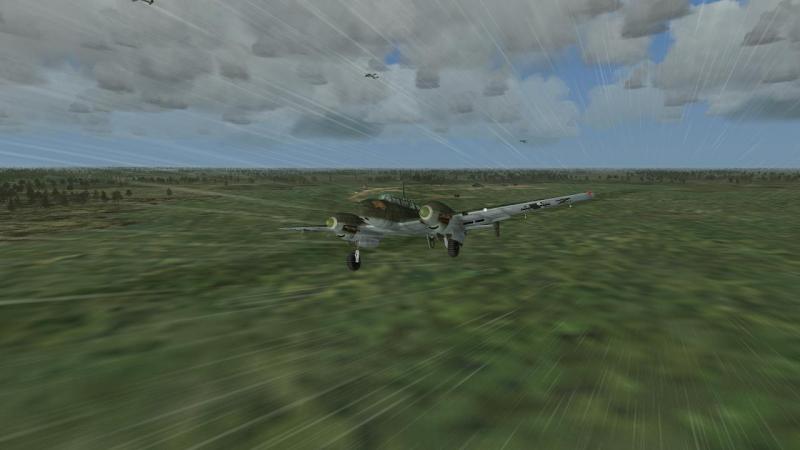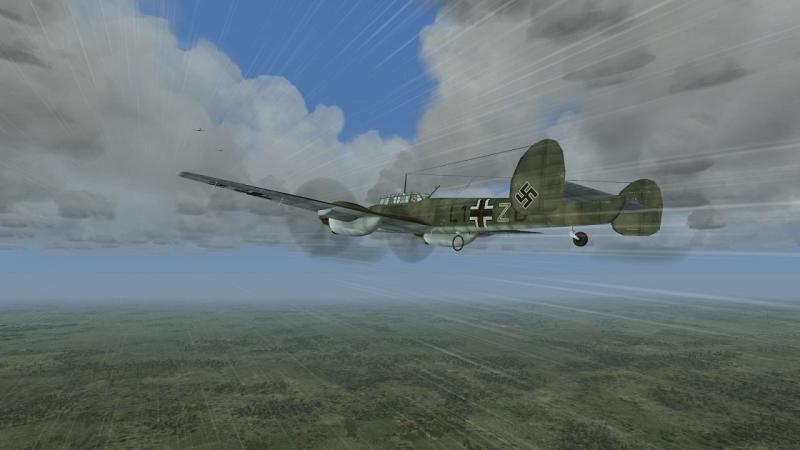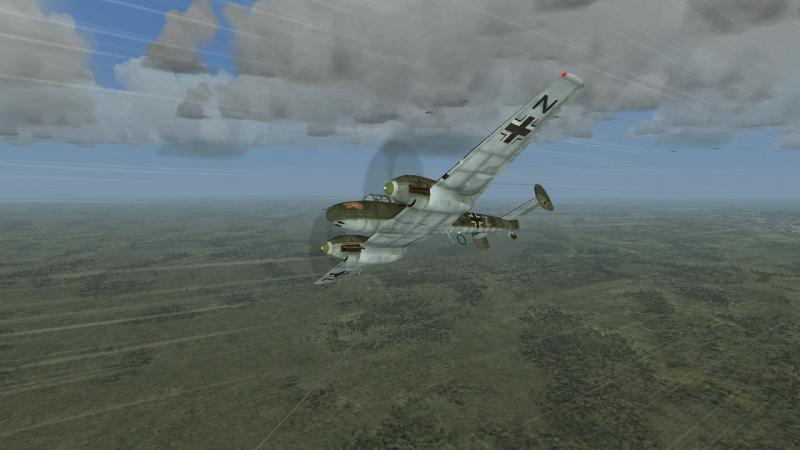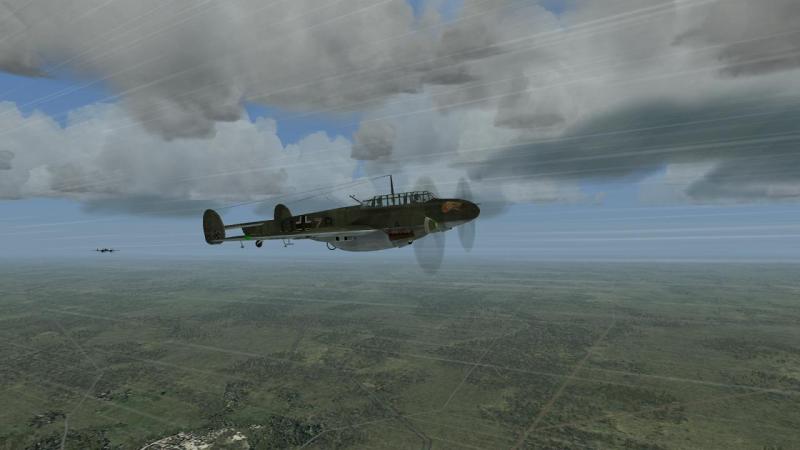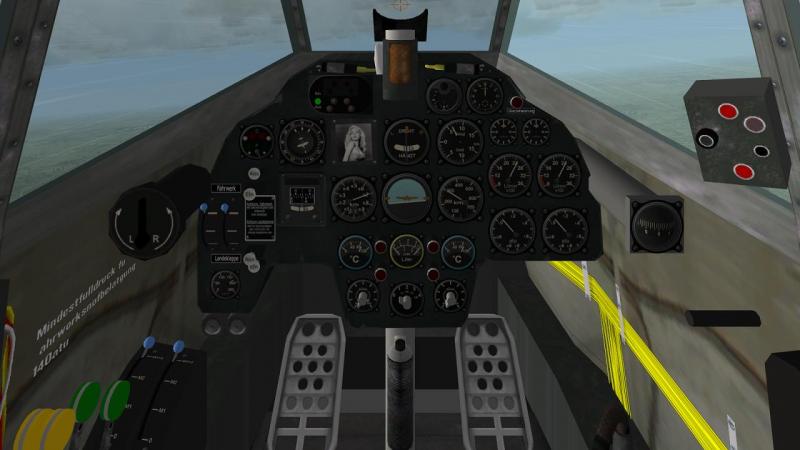-
Posts
3,749 -
Joined
-
Last visited
-
Days Won
7
Content Type
Profiles
Forums
Gallery
Downloads
Store
Everything posted by 33LIMA
-
'...a light sports plane with a 1,300hp engine' (one US verdict on the Zero, neat but overstating her engine power somewhat!) The stock CFS2 A6M2 Pearl Harbour-era Zero is still a neat and pretty accurate representation of the 'Zeke', to give her the US reporting name. Recent research suggests that her 'ame iro' overall colour was a slightly green or brown-tinted shade rather than the pure, very light grey featured on CFS2's machine, but that's probably still fair enough for a service-weathered example. I'm pretty rusty on my Zero carrier group markings but believe the stock CFS2 A6M2's 'A-111' may not represent any real-life unit. I remember that 'AI' was the code for the carrier Akagi's air group, AI-154 being Takeshi Hirano's Zero, which was one of the first obtained relatively intact, after the pilot crashed at Fort Kamehameha on 7 December; there's an interesting account of this here: http://www.j-aircraft.com/research/jimlansdale/japanese_losses_ph/Japanese_losses_Pearl_Harbor.htm Back at the mission, and hoping for better luck on my own briefed strafing of our target, I checked my Zero's controls. started up, and opened my canopy, as seemed to be a common Japanese practice for takeoff and landing. Behind me, were the two other Zeros in my flight. Apparently, emphasising an individualistic, warlike and aggressive samurai spirit, Japanese tactics did not follow the Western practice of flying and fighting in pairs and fours, so a three-aircraft 'vic' was fine. Off to my left, across the lagoon, was another airfield and I could see some other planes wheeling over it, evidently from the unit I was to escort on the raid to Buka in the Solomons. Without further ado, I opened the throttle and forgetting about flaps, sped down the sandy runway, past some large wooden hangars of mixed design. The ground rose sharply not far beyond the end of the runway but I managed to unstick in good time, as did my two wingmen. Gear up, I swept past a little landing stage at the water's edge and gained height, before turning onto course for the target. ...to be continued!
-
A stock CFS2 campaign mission in the Imperial Japanese Navy's famous Zero fighter! Figuring that - if I was going to be spending more time in CFS2 - I should get myself better re-acquainted with its ways and workings, I decided to kick off a stock campaign in the fighter which defined the Pacific War, Jiro Horikoshi's A6M Navy Type Zero Carrier fighter. I'd always had a soft spot for this plane, having built many a model back in the day, including in 1/72 those by Matchbox (A6M2), FROG (A6M3, later re-released by Matchbox Germany), Airfix (A6M2) and Revell (A6M5) and the excellent 1/32 A6M5 by the latter maker. The little Matchbox kit was always a favourite. Even though its Pearl Harbour version had the short wing of the later A6M5, it looked well left in the white plastic in which it was mostly moulded, with canopy frames picked out, motor cowling painted black and prop in silver. Nice box art too: And of course there were the movies - specifically, the Zeros in 'Tora, Tora, Tora!' That was a flim made in a day - long gone, if the silly, rather sad comic-book aerial scenes in 'Pearl Harbour', 'Red Tails' and the like are anything to go by - when some film producers could contrive to show just a little bit of respect for their material. Nowadays it's just spectactular but contrived car chases on wings, often hiding behind the claim that they are 'Inspired by true events'. Ouch! Anyhow a Zero it would be for me, in CFS2. I could have started at Pearl Harbour as I have the Just Flight add-on of that name but I'd never fully played a stock campaign before so started there, even though I knew this begins after 'the Hawaian Operation'. While IL-2 Pacific Fighters has a better stock planeset and isn't restricted to fighters, CFS2 has a more representative set of ships, decent graphics and even now, is still a great choice for anyone wishing to fly in the PTO, not to mention the many add-ons, freeware and payware, still available. I quite like the distinctive comic book style CFS2 campaign interface - which again, seems to hail from a mostly-lost era, when sim-makers added such little touches, which brought their campaigns to life . So I sat thru the Japanese pilot's subtitled soliloquy which nicely set the scene for my campaign. Then I got my briefing for our first mission. It was March 13th, 1942, and we were flying land-based Zeros based at Malaguna in New Guinea, supporting our offensive operations in the western Solomon Islands. On our first mission, my flight of thee Zeros was to escort some D3A 'Val' dive-bombers and B5N 'Kate' torpedo/level bombers to raid the enemy airfield at Buka. Serious air opposition was not expected and were were briefed to strafe the airfield, on arrival. A gentle start to our campaign...or a death trap? I would soon find out! Having consulted the map. I took a quick look at the reconnaisance photograph of the objective. This is actually a very good feature. As it showed the location of the airfield flak, I should have used it to make a plan, allocating my wingmen to attack these positions first, once I'd eyeballed them on arrival. But I was I a hurry, and instead, headed off to the flight line, where my mount awaited! ...to be continued!
-
'Maintain proper speed and altitude'…Derwent Dam Airborne from RAF Scampton, I started a gentle, left-hand climbing turn which brought me slowly around onto my heading for the training area, out at Derwent Dam. For the cruise, I cut the throttles to about three-quarters and trimmed the elevator for level flight. My Lanc was equipped with a standard bombload, not the 'mine' (as the bouncing bomb, codename 'Upkeep', was officially described). At this weight, the Lanc was responsive but sluggish, with a fairly ponderous rate of roll which quickly reminded me that I was not flying one of the fighters to which most of us are accustomed! This add-on was produced at the time when the 'virtual cockpit' 3-dimensional view, supporting panning, could not provide the detail of a fixed, 2-dimensional cockpit/instrument panel view, and so you got both. And here they are, including the side views from the 3d virtual cockpit, complete with some of the Lanc's unusual instrumentation like the radio beacon direction indicator, up top. The add-on's manual includes annotated instrument panel pictures for the Lanc, Mossie and Wimpy (Wellington). Looking out the side windows, the flattened tips to the propeller spinners are a little crude but overall the the view conveys most effectively the sense that you're sitting up there in the distinctly open, lightly-framed cockpit that graced this ruggedly-handsome big black bird. No co-pilot, just a seat for the flight engineer beside me…and the sweet music of those engines in my ears. As with take-off, the sense of 'being there' in Just Flight's Lancaster is immensely enhanced by the roar from the four Merlins, a real treat. Outside, it's noticeable that the twin Browning MGs in each turret lack breeches, but in flight, this is hidden by the arms and gauntleted hands of the air gunners. These little chaps are invisible before takeoff but they pop into position afterwards, another nice touch (as FallenPhoenix already noticed!). Likewise, the bomb aimer appears in a businesslike pose over his sight, in the dome under the front turret. He's obviously one of those keen types, as he sits there most assiduously, throughout your trip. Preserved Lancs are generally a glossy finish but the JF version nicely portrays the stark, flat black of the wartime original. The upper surface Dark Green and Dark Earth shadow-shading is nicely rendered, complete with panel and rivet detail and suitably weathered with exhaust stains. Naturally, she's rather lower-polygon and therefore more angular than we'd expect to see in a more modern sim, but she still just 'looks right'. The only (minor) negatives are the rather hi-vis aerial wires and the fact the camouflage pattern is mirrored left and right, not as it should be, 'handed', with the patterns basically reversed. Overall, it's a nice rendition and with authentic squadron codes in red. AJ-A was carried on the dams raid by 2ic (2nd in command) Sqdn Ldr Henry 'Dingy' Young, who caused the first breach in ther Moehne dam but was shot down and killed with his crew over the Dutch coast on the way home, having nearly made it back to safety; the real AJ-A was actually ED887, but the Just Flight serial number DV385 was apparently carried by a conventional BI Lancaster used later by 617, bearing the codes KC-A. Back to the mission; I knew I was going to 'warp' to the objective to save the long cross-country flight over the pleasant but bland CFS2 European terrain textures. But I could not resist flying on for a bit at a couple of thousand feet - no point in climbing higher, only to descend again - to soak up the sight and sound of my Lanc in flight, from inside and out. There aren't many sim aircraft I enjoy just taking off and flying but the JF Lanc is certainly one of them. Before hitting the magic key, I thought again about what I was going to do, on arrival. The aim, I remembered, was to practise a steady approach to a dam, at right angles and coming in over the reservoir, flying at a set height and a set airspeed, within a small margin - 1130 feet and 195 Knots, to be precise. I decided that - first time, anyway - I would fly this in the external view (for better peripheral vision) and using the 'Z' key to display, top left of screen, height and airspeed. Not as realistic as flying in the cockpit view of course but there you go. As for using the 'Z' key display, there's something to be said for a digital display over dials and I rationalised this as asking the flight engineer to call out the readings while I concentrated on flying the aircraft. Plan made, I hit the 'W' key, watching the CFS2-style short animated sequence of my machine whizzing past and on to the objective. I kept a firm hold on stick and throttle, ready to resume control the instant that we came out of 'warp'. No messing about, there...'warp' exited with my Lanc right at the start of our approach. Just ahead of me, the land fell gently away, down to Derwent Water. At the other end of the artificial lake, I could see the darker grey line of the dam itself, a rectangular tower towards either end. Time to get busy! I quickly hit the 'Z' key to turn on the flight info display and chopped the throttle back to near idle, knowing without looking that I would be too fast and too high...and that the dam was rapidly drawing closer. Time, tide and dams wait for no man. 'Maintain proper speed and altitude!', an English-accented crew voice gently but firmly reminded me…or maybe it was speaking my own simulated thoughts for me? In case I'd forgotten what these numbers were, a text display at the top of the screen on my initial approach had helpfully reminded me - 1130 feet, 195 Knots. Naturally, pushing the stick down to put me 'on the money' as regards height initially pushed up my airspeed again, but it soon fell back. Gentle aileron and rudder inputs kept my nose lined up roughly between the dam's towers while I juggled throttle and elevator controls to get and keep the numbers right. What was my margin for error? I didn't know but the occasional reminder to 'Maintain proper speed and altitude!' made me think I was edging in and out of the comfort zone. In those long few seconds as we ran in to the dam, I was certainly made to concentrate and work hard enough…if it was like this at 1100 feet, what would it be like at the real mission height of 60 feet…and in the dark? And this was just a sim! Working the controls all the way in and with one eye on the flight info readout, I seemed to be managing to avoid any crass errors in this comparatively relaxed daylight try-out. Soon I was on top of the dam, then roaring over it. With a mix of relief and satisfaction, I heard the same crew voice telling me we'd made it, albeit with a reminder that further practice would be required! As I banked away, I contemplated making another run, but was deterred by another mission announcement. This time it seemed to be my pilot's voice, telling the radio operator to advise Scampton that were were homeward bound, followed by a burst of Morse as the required signal was tapped out. I dare say there's no reason I couldn't have flown as many circuits as I wished, but I decided I'd go with the flow and 'warped' home. This brought me out neatly lined up for my approach. The little but well-produced Just Flight add-on manual may give you some numbers for the Lanc but I just flew her in by the seat of the pants, gradually putting in maximum flap then dropping the undercart. Juggling throttle and evevator to keep my rate of descent aimed at the runway threshold and my airspeed at about 120-130, I was again flying from the external view and using the flight information display. While this is one of those planes l also much enjoy flying from the cockpit, on this occasion at least I was very happy to enjoy the CFS2 'spot' view - which zooms in fixed steps but thankfully lacks the horrible wide-angle lens effect of CFS3 - as my big aeroplane slipped down and gracefully settled onto the concrete after a short flare as I pulled the throttles all the way back. Home sweet home, now back to the apron and then off to the Mess for a beer and a natter with the virtual chaps! And here's the debrief screen: For someone who's not much into flight sims where you don't get to 'blow stuff up', I found this non-combat mission quite a lot of fun, even if it didn't involve doing much more than takeoff, a single run, and then landing. I suppose this is a sign of how much I enjoyed the experience of Just Flight's Lancaster, compared to others I've flown (Screamin' Demons over Europe, CFS3/Firepower, CFS3/ETO Expansion). I'm certainly tempted to fly some of the other missions again now, even if a Mission Report on the night raids is unlikely to see the light of day, if you see what I mean. Two of this add-on's raids feature the attacks on the battleship Tirpitz with adapted Lancasters and Tallboy bombs - the second being the raid which capsized the 'Lonely Queen of the North' in her Norwegian fjord lair. I think I'll have a crack at these and some of the other daylight raids, or maybe take up the option of flying the night raids at a more civilised time of the day. The roar of those four virtual Merlins is calling me away! Edit - just found this clip on Youtube which, though rather low resolution and the night raids are evidently flown in the daytime option, gives a good idea of the scope of this neat little add-on. And in case anyone found this mission report a tad dull, don't worry - next time, it'll likely be back to blowing stuff up! Dusk takeoff in the Tallboy Lanc included with the Just Flight patch for ''The Dam busters':
-
Flying the Lancaster in Just Flight's venerable 'Dambusters' add-on for CFS2 There can't be many missions more famous than that flown in May 1943 by RAF Bomber Command's 617 Squadron to attack dams in the Ruhr, Germany. And justly so, for the mission was a triumph of technical ingenuity and airmanship, immortalised in the film named after the Dambusters. Flown with real Lancasters, some of the most impressive footage in the film was shot in daylight and recreated the squadron's low-flying practice over Derwent reservoir, with the mighty Lancs seen from above wheeling over the water as they made their practice runs. The Just Flight CFS2 add on 'The Dam Busters' was officially licensed by the RAF and like most of the company's add-ons, comes in a nice, solid little box with a decent printed manual. It's far from a one-horse wonder. Subtitled '617 Squadron's Greatest Raids', as well as Operation Chastise, the dams mission, it provides many others, including raids on the Tirpitz, the Dortmund-Ems canal, the Bielefeld railway viaduct and the attack on Hitler's mountain-top lair at the Berchtesgaden. There's a variety of Lancaster variants, including the basic bomber and types adapted to carry the dam-busting 'Upkeep' mine and the Tallboy and ten-ton Grand Slam bombs; plus a pathfinder Mosquito, a late-model BXVI. There's even a Wellington bomber, included so you can fly one of the trial missions flown at Chesil Beach to try out the 'bouncing bomb' in daylight. I believe the add-on is still available: http://www.justflight.com/product/the-dam-busters Despite CFS2 not being built to handle bombers, the package does a rather good job, featuring such neat touches as the twin spotlights used for over-water height-finding and the 'wood and nails' rangefinder sight, both as developed for the dams raid. I believe the add-on was used as the basis for a TV documentary a few years back, which featured a crew drawn from current RAF personnel who were trained up and then attempted to re-fly the mission in a specially-made Lanc simulator. As for the real thing, while we're lucky (in the UK anyway) to be able to see (and hear!) a real Lanc flying with the Battle of Britain Memorial Flight, you can get no better than this documentary, which features superb authentic wartime footage in colour: https://www.youtube.com/watch?v=eqQAA2rcBno Having recently once again watched and enjoyed the Dambusters movie, I thought I'd spool up Just Flight's add-on and fly one of the training missions, followed by at least some of the others. While the Dams raid and some others are in darkness, the package lets you fly them in daylight, if you wish. As I plan on doing it in the dark, there's little point in a screenshot-illustrated mission report on the dams raid itself so I thought I'd provide this short one of the training mission, as a little taster. Here's the brief, using some of the custom screens that come with the add-on: There's also a 'recce photograph, which shows the 'scenery' Derwent Dam that comes with the package, along with various RAF bases including Scampton and Woodhall Spa. The dam is crude but effective, and is neatly dressed up to look like a real-life RAF oblique recce picture. For me, the star of this show is the Lancaster itself. The Just Flight version is nicely rendered by the standards of the time. And it has one outstanding feature - the engine sound. The roar and din of four Merlins at full throttle is an absolute joy and by far the best I've heard in any sim for any plane. And here she is, sitting at the end of the runway at RAF Scampton. She's a standard BI bomber, not the modified version cut away below to hold the drum-like dams weapon. From the caption to the first screenie, you can see another of the add-on's nice touches - the pilot's injunction to the ground crew to remove the chocks. Neither can be seen but the accompanying audio is neat. Looking right, I could see the airfield's buildings, a good selection including hangars and Nissen huts. Beside me was a tractor with some bomb tailers. Without further ado, I checked the controls, set the flaps down three notches, and started up. The engines fired up from left to right, bursting into life with a very satsfactory though muted roar. Ahead to the left you can see the controller's trailer, and beyond that a pair of parked Lancs. To the right, there's another parked aircraft, this time an RAF Dakota. Now, came the mission's highlight - opening the throttles, and soaking up the din as the Merlins responded in full song. A bit of differential braking was needed to keep her on or near the centre line as we gathered speed, the rudders seeming ineffective, possibly as they are masked by that mighty Lancaster wing. Taking off in a crosswind is an even more interesting experience! Past the parked Lancs we went. As the speed increased I got the tail up and held her there until takeoff speed was reached. A gentle tug on the stick and we were airborne. I quickly retracted the undercart - the animation is a bit fast - and we were on our way! ...to be continued!
-
'The first bomb blew in all the doors and breached one of the outer walls' (Martin Bowman, 'Aircraft of the Aces - Mosquitos of World War 2', Osprey/DelPrado) Up and around for another pass. I got off four rockets this time, noticing that my first pair seemed only to have cratered the vicinity of the wall I was firing at. On the R/T, I could head my squadron was taking some losses but also making some attacks of their own. On my last pass, heading now in the direction of home, I loosed off the last of my eight rockets. By that time, I could see that the prison wall, which had seemed to be coming apart on the last pass, was now missing a large section, both where I had been attacking it and in another area! Yesss! My final personal contribution to the mission was a risky firing pass at a couple of the AA guns nearby. Not good life insurance but it might mean the difference between life and death for some of my mates still attacking the target, and perhaps also for the virtual prisoners down below whom we were trying to save, albeit at the risk of hastening their demise. That was enough for one day. I could have stooged around until I was sure all of my squadron had made their attacks. I think the only way to do this is maybe selecting targets and hitting the 'A'/attack key until the only acknowledgements you get are people telling you they could not comply. But I decided to call it quits and avoid more losses in that flak-infested area; I had seen at least two Mossies go down and that was enough. I circled the objective in a wide arc and gave the recall command…and home we went. Yes I know the pic below shows us fully loaded but I didn't take a screenie on the way home, partly through the release of tension after some tricky flying. Time was short so I skipped the rest of the flight home and just went for the debriefing. The damage we'd wrought was credited to us - or mine was anyway, not sure how to view individual wingman results in CFS2 or if they're just taken into account overall, in resolving the mission goals - but it wasn't enough to count the mission as a success. CFS2 missions are very goal-oriented, but in this sort of mission that's not a bad thing. We'd missed the guard accomodation, whose destruction on the real mission was deemed important to helping the prisoners escape. This is more realistic than the stock CFS2 campaigns, whose objectives typically set you unrealistic fixed goals like destroying at least a certain number of enemy aircraft, and fail you if you don't. Daft. Overall, this was an engaging and enjoyable mission and - though I'll miss the more modern sims for the time being, -I'm now looking forward to playing further missions in this and/or in some of the other CFS2 expansions I picked up 'back in the day', as well as some other classic sims. I gather there's a new .exe of European Air War a-coming, for one. And plenty more where that came from...Screamin' Demons Over Europe, M1 Tank Platoon 2 and Panzer Elite, anybody?
-
'At precisely 12.01 pm, with the guards sat down to eat their lunch, bombs from 11 Mosquitoes hit the prison.' (Martin Bowman, 'Aircraft of the Aces - Mosquitos of World War 2', Osprey/DelPrado) We exited 'warp' over the western fringes of a town which must be Amiens, at perhaps two or three thousand feet. Peering ahead, I began to see buildings take shape out of the bland mass of CFS2 urban textures (they emerge from the general blur rather close, perhaps, but without the rather obvious 'pop-up' of IL-2). We seemed to have rather a lot of Canadian pilots in the squadron, from the accents of the voices warning me that the target lay ahead and that flak was coming up to meet us...either that or these were the stock CFS2 aircrew voices. The flak needed no such announcement; I could see for myself from my virtual cockpit the black busts appearing in the sky ahead, soon joined by yellow pencil lines of tracer fire. Looking behind, two aircraft of the second flight were already going down, though from the lack of flak bursts in that particular piece of sky, it could have been a mid-air collision. This was where that recce photo came in handy, as I was soon able to identify the target building amongst a cluster of smaller structures, more or less dead ahead. The moment of truth had arrived! It was at this point that I realised I had made no plan at all for the attack. In fact I had rather got out of the CFS2 flight-leading habit. Air-to-air I was used to, from flying a lot in CFS3 derivative Over Flanders Fields and the occasional CFS2 Pacific fighter mission. But here, the task was a bit more complicated. A certain amount of precision bombing (or rocketing) was called for, against a very specific target. And I knew that my wingmen had likely not been pre-programmed by the mission designer to attack anything, and would be relying on my orders, on arrival…as in, now. My original, large-box version of CFS2 came with a large printed manual, but I was loath to pause the game while I retrieved and read this. So, recalling my experience with OFF and with ground targets selected on the rectangular CFS2 TAC, I started tabbing through these targets. I was relieved to see the 'gamey' but rather useful yellow 'target selected' brackets appear on the ground, with my first tap of the key. Watching what they picked up as I tabbed, I could see that the target brackets appeared to be cycling through the things we needed to destroy: the prison's walls, guard towers, and guard accommodation. As all this was happening, my speed was carrying me up to the flak-laced sky around the target, so I had to act quickly. First, I needed to make a rapid choice between going straight in, or pulling to the side while I organised things at leisure. I decided to carry on. Each time the target brackets picked up something I reckoned needed whacking, I gave an 'Attack' command - the 'A' key, no nested menus needed for CFS2's short command set! As I remembered would happen, with each command, a pair of aircraft peeled off to attack the designated target. Not entirely realistic, but reasonable enough, as I had no way of saying on the radio - 'Red Section, target - guard tower, northeast corner of prison, go!' I roared past the target at about seven hundred feet. The need to issue this flurry of commands had left me with no opportunity to make an attack of my own, but I could at least distract some of the flak and set myself up for a firing pass with my rockets, on the way back. And that's what I did. I jinked then throttled back, pulled her up, around and over, nosing back down at the target in a 30 degree dive and edging the throttles fully open as I came in. I 'armed' (selected) the rockets and lined up my target - a section of wall with a guard tower at each end - in my reflector sight. Allowing for the drop in the rockets' trajectory, I let the centre of the sight reticule move up and through my target and fired when it I judged it was sufficiently far above my mark. Fire! With a loud whooshing sound, a pair of HE rockets streaked away, their oversize tracers leaving a trail of grey smoke. No time to ripple off a second pair. I pulled up and flashed over the target, narrowly missing crashing into it. I was only vaguely conscious of gouts of dark smoke around my aiming point and more aware now of the angry bangs of flak and the tracer slashing past my canopy. Crikey, this is b***dy dangerous, I thought to myself. ...to be continued!
-
Low-level precision raids in the 'Wooden Wonder', CFS2-style Why a mission report on a sim released way back in 2000, you may ask? Well, there are three reasons for this, which go beyond a mere trip down memory lane. Firstly, there's the relative dearth (in number, sometimes also in quality) of sim releases since then; such that many older sims still compare favourably, in features, if not graphically. IL-2 was released the year after CFS2 and it remains well worth playing. CFS2's graphics may be noticeably more dated but they're still quite serviceable and the sim itself benefited from a tremendous amount of additional freeware and payware content, extending its scope from the Pacific to Europe, Korea and even Vietnam. Secondly, this report was intended to be first in a series comparing the 'Mossie' in different sims - at least, in CFS2, CFS3 and IL-2. I say 'was'...which leads me onto the third reason for a CFS2 mission report... …which is that my dated but effective 8800GT graphics card gave up the ghost at the weekend, leaving me having to make do with the budget card it replaced (a 9300GS!). So for the next few months or so, it looks like I'll be dusting off some older sims…which is not entirely a bad thing. Or so I'm telling myself! The add-on, the mission and the plane A little while ago on another forum, Hauksbee posted about some famous Mosquito precision bombing missions, which included Operation Jericho, the raid on Amiens Prison designed to aid the escape of French Resistance captives believed to be facing execution. This brought to mind the Just Flight add-on for CFS2 called 'Mosquito Squadron' which I recalled featured this very mission, as well as the Gestapo HQ raids which had prompted Hauksbee's original post. You can find out more about the package, which I believe is still available, here: http://www.justflight.com/product/mosquito-squadron …and here: http://www.flightsim.com/vbfs/content.php?1180-Mosquito-Squadron I already had CFS2 installed on my (Vista 64) PC - I still enjoy firing up some of the historical missions for a rattle in a Zero or a Corsair - so I installed the add-on, spooled her up, created a new British pilot and kicked off the Mosquito campaign. Sure enough, the campaign mission set included Op Jericho, along with many other representative or historical Mosquito raids. And though these are arranged in date order, to create the semblance of an operational tour or career, you can start the sequence with any mission you choose. So it was that I found myself at the planning screens for Operation Jericho, on 18 February 1944, leading a strike force of eight aircraft. All were Mosquito FBVIs, the fighter-bomber version packing four .303' machine guns and a similar number of 20mm cannon. Despite the latter taking up a good bit of space including the front half of the internal bomb bay, the FBVI still had a room in the rear half for a couple of 500lb bombs, less than the contemporary BIV glass-nosed bomber but capable of being supplemented by bombs or rockets carried under the outer wings. The famous 'Mossie' will need no introduction to anyone with any interest in WW2 aviation; she had a blistering performance for her day and was the envy of her enemies, excelling as day bomber, fighter-bomber, night fighter, anti-shipping and photo-recce aircraft. The 1960s film '633 Squadron' may (or may not!) be rather clichéd by modern standards but it was a feast of roaring Merlins and low-flying Wooden Wonders, with the odd bit of wooden special effects to match but totally free of the contrived Star Wars-style CGI which seems to blot most flying films nowadays. Anyhow, back to our raid on Amiens Prison...the CFS2 planning screens, as usual, allowed me to switch crews between flight positions, inspect a map, check mission goals...and view a 'recce photo' of the target. This latter was most useful - it was a render of the target building, annotated to highlight the guard towers, walls and barracks that wanted bombing, as well as the jail block itself, which did not. This was useful, both to help me get 'eyes on' the target during the run in, and to make sure we attacked the right bits of it, only! The default armament for my machine was rockets and I stuck with these as more accurate weapons (in my unpracticed hands, anyway!) than the HE bombs which I think were actually used on the real raid. Having quickly run through the planning phase - too quickly to take a screenshot, but you'lll be able to see the map at the debriefing stage, later - I kicked off the mission. And here we are, lined up on the runway at RAF Methwold: Experienced CFS2 players will understand that this sim dates from the time when Microsoft flight sim landscapes were basically barren, apart from placed sets of 'scenery' objects, like the RAF airfield provided with 'Mosquito Squadron'. Despite being Pacific-based, CFS2 does at least include reasonably topographically accurate terrain for much of NW Europe and (as far as I know) the rest of the world, even if it is covered with nothing more than bland (but reasonably effective) textures and odd spots of scenery objects created and placed for specific missions. Looking at our mounts, the Just Flight Mossie is a nice representation. The canopy framing looks a little slender but the machine's outline looks quite accurate; unlike the CFS3 Mossie, which was a BIV bomber with distinctive split (instead of flat-fronted) windscreen and glass nose painted over for the FBVI and FBXVIII variants, and had a rather poorly-shaped fin. One negative about this CFS2 version is that the upper surface camouflage pattern is mirrored, whereas in real life the green 'shadow shading' on the upper surfaces was different on left and right sides. Otherwise, it is a reasonable representation of the mid-war Mossie scheme, which used the RAF fighter Command scheme of the day, later modified to use the same, lighter shade of grey above and below. Inside, you get the old-fashioned fixed cockpit graphic and the less detailed virtual cockpit, the former only supporting snap view, the latter panning as well. Neither are up to IL-2 standards but CFS2 virtual cockpits are not bad, some considering them generally better than the CFS3 versions, though the Just Flight Mossie's is rather dark. In the external view, I set the flaps to down one notch, checked the controls worked, and started engines, my two Merlins firing up one after the other. One of the highlights of this package - as with the Just Flight 'Dambusters' add-on - is the engine sounds, which are noisy, dramatic and effective, worthy of any current sim. Brakes off and throttle briskly up to the limit, and I was on my way. Rudder was needed to keep her straight; with the rapid acceleration from my fast application of full throttle, it was easy to overcorrect and some care had to be taken to prevent my kite ground-looping. The CFS2 Mossie's wheels are not animated in rotation but they and the undercart look the part, unlike the undernourished articles on the CFS3 version. I was soon off the ground and retracting my gear. Flaps up, I called up the 'radar'/Tactical Display/TAC - retained in CFS3, but changed from rectangular to an even more radar-like circular display - and checked the orientation of my first leg with the blue track line to the next waypoint. I climbed slowly and turned gently onto my course, at which point the track line turned green. Throttling back for a bit to enable my squadron to catch up, I looked around. Apart from the scenery objects representing RAF Methwold and the nearby village of that name, there was not much to be seen - open country with summer-like field textures, the odd beige-grey patch denoting an urban area, the flat landscape reasonably appropriate for the low-lying county of Norfolk in eastern England. Settled on course and into formation, I set the TAC to display ground targets and used the 'warp' feature to avoid the long flight over Norfolk, across the Thames Estuary, over SE England then the English Channel and overland to Amiens in north-western France. CFS2 campaign missions being scripted rather than 'dynamic', I was confident that unlike CFS3, warp would bring me out at a sensiblly low level, appropriate for this mission, not the 'one-size-fits-all' tens of thousands of feet of the later sim. And so it came to pass. ...to be continued!
-
My pleasure!
- 23 replies
-
- cfs3
- eto expansion
-
(and 3 more)
Tagged with:
-
I think that's the one that starts with a transit flight in a 109E? Didn't finish it for some reason; must dig it out again and see if it'll work in DBW or in 4.12!
- 12 replies
-
- il-2
- defence of the reich
-
(and 1 more)
Tagged with:
-
'Fini' - the final act! As my flight-mates latched onto the last Messerschmitt, he swerved towards me. I slipped in behind him, thinking to distract his gunner from the pursuing French planes. This worked a bit too well, because the cochon actually hit me! So I pulled up and kept a watchful eye on proceedings, and let them get on with it. This went on for some time. Thankfully, the two attacking Curtisses didn't seem to get in each other's way. One stayed on the Messerschmitt's tail, while the other hung back. Several times, the leading Frenchman looked to be in a good position, but there seemed to be no shooting. Was he out of ammunition? I gave this a while longer, then decided enough was enough. At one point the 110 slipped below us, heading back east. Taking the opportunity, I pulled up and headed west, ordering a recall as I did so. As my comrades rejoined, I swung around to the north-west and home at full power, keeping a watchful eye behind in case the German decided to come after us. But he too seemed to have decided that it was time to call it quits. The flight home was uneventful. As we neared our airfield, my three surviving squadron mates broke off and I made my own approach. As I turned onto finals, I realised my flaps would not extend. Combat damage from that rear gunner! Then I realised my undercarriage would not go down, either. Bon Dieu de mille bons Dieux! I executed a hasty go-around. I opted to make the now-inevitable belly-landing at an adjacent airfield with a grass landing area, thinking perhaps this would give me a better chance of avoiding a crack-up. Unlike IL-2, in my experience CFS3 is VERY unforgiving in the event of a wheels-up landing on ground or water. In my anxiety not to fall foul of this, I somewhat overdid holding her off just before touching down. The lack of shadows didn't help me, in judging my height - I think CFS3 'turns them off' in cloudy conditions, although the cloud cover was intermittent today so I may have turned them off by accident somewhere. My worst fears were duly realised. The debriefing was typical CFS3. Listing my mission goals - which unhelpfully, I don't think CFS3 spells out at the briefing! - I was told that I had succeeded in reaching my mission goal. The goals I had failed were listed as 'visit all waypoints, survive, and return to final destination' (the middle bit of the latter presumably being the issue there) and 'destroy Hs123 formation'. Thanks, CFS3 campaign system, for not telling me at the briefing that I had to do that. On the positive side, I was credited with two Bf110s brought down. I knew that the mission had cost my squadron four aircraft. But unless I've missed something, there is no way of finding out whether your shot-down squadron mates survived or not, or what success they had - I knew they had shot down at least one, probably at least two, but unless I've missed it or forgotten, CFS3 is very much focussed on you the player and doesn't seem to care much about your mates, or to encourage you to do so, either. If I recall right there is a (very long) list of pilot names in a squadron roster but I don't think this helps much, unless there's some facility I've forgotten which lets you review it after each campaign mission to see losses and kills. If it is there, it's not very well presented. Nevertheless, and despite air-to-air not in my experience being CFS3's strong point, this was a challenging and enjoyable mission and the terrain, planes and effects were very good. Although I'm rather spoiled by the fact you can fly, patrol-lead and fight in First Eagles with no visual aids, I soon got used to using the CFS3 'radar' as a reasonable way of being able to get reasonably realistic reports from an imaginary ground control and organise my wingmen's activities in a reasonably realistic way which would have been much more difficult without a very capable set of radio commands. As for my plane, the Curtiss Hawk was a nice mount and I only stalled and spun out once, recovering without too much fuss. Flying the H75 in the ETO Expansion gave me some insight into why it was that such a high percentage of the Armée de l'Air's kill claims against the Luftwaffe were made in these aircraft. Definitely recommended!
- 23 replies
-
- 3
-

-
- cfs3
- eto expansion
-
(and 3 more)
Tagged with:
-
'Notre patrie est en peril de mort. Luttons tous pour la sauver!' ('Our motherland is in danger of dying. Let us all fight to save her!' - General Charles de Gaulle in his famous 1940 appeal 'Á tous les Francais') There was at least one other Messerschmitt in the air, and I was soon after him, firing as I came. But not for long! My rounds had evidently damaged his starboard engine which was trailing a thin whitish whisp of what looked like escaping Glycol coolant or fuel. But I ran out of ammunition, just as I thought I had him. He went down in a descending turn, as I watched in frustration, squeezing my triggers in the vain hope that my weapons would magically spring back into life. No such luck...away he went! Well, if I can't finish him off, maybe somebody else can, I thought. The airwaves seemed to have settled down and apart from this German, the combat seemed to have fizzled out. So I issued the order to attack my target. The first response was 'No can do!' (the voices are all the original US English, incidentally) but the next two acknowledged their compliance. This was good, but also a bit of a worry. Were there only four of us left? Not so good, if so. ...to be continued!
- 23 replies
-
- 2
-

-
- cfs3
- eto expansion
-
(and 3 more)
Tagged with:
-
'il nous faut de l'audace, et encore de l'audace, et toujours de l'audace!' ('We need audacity, more audacity, always audacity!' - French Revolutionary leader Danton, in response to the Duke of Brunswick's Prussian invasion in 1792) As I swung around in an effort to dive down behind the formation of Henschels, I went slightly wide, but soon managed to padlock a target at lower level. Only problem was, he was moving very fast and even at that range, he did not look much like a biplane close support aircraft. I had to keep my throttle open and pull a lot of Gs to get onto him. Despite the G-induced blackness giving me tunnel vision as I pulled out after him, I quickly realised that the Boche was in fact a Messerchmitt 110...and he was not alone. Oh, merde! In for a centime, in for a franc, I thought. No going back now. I concentrated on the nearer 110 and went for him. His rear gunner didn't seem to be able to get onto me and although my shooting was initially a bit wild, I managed to get some good hits. There was a sudden gush of bright orange flame from somewhere between his fuselage and his starboard engine, and down he went Now, where was that second Messerschmitt? A look behind...there he was! I banked tighly and pulled hard back on the stick. The German disappeared somewhere behind and below me and instead, I latched onto another 110 whom I could see up ahead of me. After a few ineffective exchanges of fire between myself and his rear gunner, he made the mistake of reversing his course in front of me and I got in another good burst, with similar results. I watched him go for a bit. Though he seemed in no hurry to make the final plunge to earth, I was fairly sure he was finished. Conscious of the Golden Rule, never to fly straight and level for long in a combat zone, I turned and looked around to see how the air fight was going. During my attacks I was conscious of some radio chatter, with my comrades announcing both serious damage and some kills of their own. One of these I saw for myself. As I watched, one of my friends latched onto the tail of another Messerschmitt. I swung over, ready to help, but there was no need. He followed the 110 through its evasive manoeuvres and a short burst saw the enemy machine break up and tumble earthwards in pieces. So far, soo good! ...to be continued!
- 23 replies
-
- 2
-

-
- cfs3
- eto expansion
-
(and 3 more)
Tagged with:
-
'Ils ne passeront pas!" ('They shall not pass!' - famously, the rallying cry of General Pétain against the German WW1 Verdun offensive) The ETO Expansion's H75 is a fine plane. The tailwheel fairing under the tailplane is possibly a bit angular at the rear but she really looks well, resplendent in her multicolour Armée de l'Air camouflage scheme and markings; nice cockpit, too: By now assembled in formation, we completed our climb to height and settled on our assigned interception course to the south-east. The showers eased off somewhat as we sped on. Things seemed quiet en route, so I decided to 'warp', to save time on the long and likely uneventful transit flight over friendly territory. We automatically exited 'warp' just short of our objective area, a sign that enemies were not too far off. I looked around, and was surprised to see a formation of single-engined biplanes, which, without the 'radar', had been hard to pick out against the ground until they were quite close. They suddenly came into view on a reciprocal course, ahead and somewhat below us, and just as quickly slipped under us. What were they? Fiat CR42s was my first thought, not likely Italian but I seemed to recall that our Belgian allies flew some of these. Just as they slipped out of view below us, something clicked in my head and I recognised their familiar shape: radial engine, big upper wing, much smaller lower one...Henschel 123 ground attack aircraft - I was sure of it! I turned on the 'radar' so as to be able to padlock targets for myself and to allocate them to my comrades, tapped the 'A' key several times to give the order to attack and banked around hard into a 180 degree turn. Our formation promptly disintergated as my escadrille broke up, swung around and went for the Boches. ...to be continued!
- 23 replies
-
- 1
-

-
- cfs3
- eto expansion
-
(and 3 more)
Tagged with:
-
Hi Viggen this was discussed here, may help: http://combatace.com/topic/75108-new-to-this-game/ Of course there's more since then. It's a fair bit of work to get a modded install with all the goodies set up and running but it's very worthwhile and nothing to the work the modders put in. What I'd suggest is go for broke - install Ojcar's Armchair Aces Redux campaigm; look at the readme and get/install all the planes and mods needed for it. Apart from a handful of new planes like the new BE2c from Stephen1918, that will bring you up to snuff in one go. Most of what's needed is here at CombatAce; the rest is at the A Team Skunkworks (which has its own, distinctive email registration request process and download rules you need to be careful to observe). That will give you a WW1 sim covering the air war from 1915 to the end with a planeset nothing else can match. Zip and save your 'mods folder' to disc and you're ready for anything. From there it's a short step to creating a second FE2 install and adding a few extra planes for Gterl's Italian Theatre and another one for Ojcar's Unsung Heroes floatplane campaign.
-
'...le jour de gloire est arrivé!' - blocking the Blitzkrieg with the French air force...in a US fighter! Having enjoyed flying for the Luftwaffe in the 1940 German offensive in the west, courtesy of the CFS3 ETO Expansion, I thought I would swap sides and see if I could stop the enemy tide. None of this comes with stock CFS3, which focuses on the later-war period. But 'Attack in the West 1940' is one of the additional 'eras' that the freeware expansion bolts on, and firing it up, I saw that I had the choice of flying with the Belgians, French or RAF (which latter had an 'Air Component' to the Army's British Expeditionary Force on the continent when the balloon went up in May 1940). I've always been a fan of the Hawker Hurricane and lapped up the initial scenes of the film 'the Battle of Britain' which have some great footage of Hurris, culminating with their 'lame ducks' being clobbered by a low-level strafing attack by Bf109s. When I say 'low-level', that doesn't do justice to the flying of the Spanish air force pilots operating the Hispano 'Buchons' in Bf109E colours - one of them almost clips a perimeter fence with his prop - totally mad, and no Star Wars CGI anywhere in sight, just great planes and great flying! But I digress... Despite being a fan of the Hurricane, I decided to fly for the Armee de l'Air, as the French air force was officially called. As a kid I'd built the neat little FROG 1/72 Morane Saulnier 406 and the Revell Curtiss P-36/Hawk 75. Plus I was keen to fly a French fighter of some sort, to add a bit of immersion by giving me some sense of defending hearth and home against the invading enemy hordes. So I created a French pilot, naming him Clostermann after the famous Free French/RAF fighter ace whose great book, 'The Big Show', is much the most vivid and powerful fighter pilot auobiography I've ever read. Likely because that's how the inbuilt 'Nationality Expansion' pack works, the ETO Expansion actually does describe the 1940 French side as 'Free French'. This didn't become a reality till later, after de Gaulle had rallied the defeated nation from England with his stirring call to arms 'La France a perdu une bataille, mais la France n'a pas perdu la guerre' - a battle is lost but not the war! My assigned unit - which I don't think was actually named - was allocated the Curtiss Hawk (French designation H75C1). This was one of several US planes the French purchasing commission had obtained from America just before war broke out. The swift German victories in the west tend to create the impression of overwhelming Luftwaffe superiority but it was a hard fought battle and the Curtiss Hawk was no pushover. In 'WW2 Fighter Conflict' Alfred Price says ''Although its general performance [like the Hurricane's] fell somewhat below those of the British and German fighters mentioned [spitfire I and Bf109E] the American fighter, with its finely harmonised controls and large mechanical advantage between stick and ailerons, was superior to both of them in its high speed handling'. There are some nice clips of a preserved P-36 in Armée de l'Air colours on the net, including this one on Youtube, where you can soak up the sight and sound of this gutsy little warplane in flight: I was shortly to experience my own first flight in the Curtiss, albeit a virtual one. I kicked off the campaign, and was started early on the morning of 10th May, 1940, the day the German western Blitzkrieg kicked off. As usual with CFS3's dynamic campaign, I was offered a campaign map - which showed the front lines as yet aligned with the national borders - and a drop-down list of alternative missions. The first item was an interception, and I accepted this as more appropriate and possibly more fun that a close support sortie. We were based at Etain-Rouvres in NW France, up near the border with Belgium and Luxembourg, where the main weight of the German offensive would fall. In real life anyway: perhaps not so in this more open-ended and simulated campaign, where our target lay well to the south-east. As usual, I was allocated a flight of eight - this would be effectively a squadron operation, with the player leading in the usual CFS3 style. Here we are, lined up and ready to go in the early morning light. Below that are the orders for the mission. As you can see, I got much the same weather as in my previous Blitzkrieg mission, flown in the German Bf110: cloudy and failrly steady precipitation. Undeterred, I turned on the 'radar'/Tactical Display/TAC, left its range at the maximum of 8 miles, and - bearing in mind this mission was air-to-air - cycled its displayed target type from 'all' to 'aircraft'. In the external view, I checked the movement of all flying controls, started up, and lowered my flaps, one notch. Behind me, my squadron was already started up and good to go. Opening her up, I accelerated down the runway, correcting swing with rudder and a touch of differential braking. My men wasted no time and were quickly roaring after me. The ETO Expansion aircraft generally model wingtip vortices and navigation lights at low airspeed and these were visible as I took off. Soon it was 'gear up' and off we went, leaving the rising sun behind us as we formed up and began the climb for height. The Boche were going to pay for setting foot on the sacred soil of France! Or at least, that was the plan... ...to be continied!
- 23 replies
-
- 1
-

-
- cfs3
- eto expansion
-
(and 3 more)
Tagged with:
-

Color of British tracer rounds?
33LIMA replied to DukeIronHand's topic in WOFF UE/PE - General Discussion
'None' may be the answer to that. In 'No Parachute', in a letter to his fiancée in May 1917, Arthur Gould Lee describes tracers for her benefit, and this is what he says: 'Tracers, I should explain, are special bullets, mixed one to three with ordinary, which contain phosphorous, and leave a white trail as they whizz through the air, so showing where your bullets are going, more or less - they're not all that accurate.' On a quick read, I can't see him describing tracer in terms of colour. Several times he describes seeing tracer fire, and several times, smelling it. The crucial thing in his description seems to be that the visible effect tracer produced was the white smoke trail. He makes no reference to any glow, of any colour, that I can see. It was the white smoke trail that he says permitted observation and correction of your fire, not seeing the burning phosphorous. This is also how Rudolph Stark portrays tracer fire in his paintings of his air combats in 1918, that are featured in his book 'Wings of War'. Tracer fire may have looked quite different in daytime anyway. As I recall it, NATO 7.62mm tracers where a bright pinkish-red in dark, but were a washed-out version of that in daylight, more pink than red. They didn't leave smoke trails though, not that I ever recalled seeing anyway. So I'm inclined to think that in WW1 air combat, the smoke trail was generally the visible effect of tracer, and that the burning compound may not necessarily have had any particular colour, that was apparent to the firer. -

109F questions ...
33LIMA replied to Wrench's topic in Thirdwire: Strike Fighters 2 Series - World War II Forum
About the oil cooler, the bottom one (older) is a much better shape. Just a little deep for a 109F but a better shape. Couple of other suggestions: - move the wings down slightly, so that their undersurface is flush or level with the lower fuselage; - from the front, the canopy should be angular, not rounded (the only rounded area is the top section of glass in the little piece behind the section that opens); - move the tailplane/horizontal stabiliser and elevators down - they are much too high - and further forward; - make the propeller spinner a bit less bulbous/a bit more streamlined; - flatten the exhaust stubs - make them more rectangular in cross section, less round; - reduce the width of the cowling MG troughs; - make sure the sides of the rudder are flat - there seems to be a 'fold' in your rudder following the line of the upper fuselage backwards (the Bf109 rudder is slightly triangular, looked at from ahead or astern, but its sides are flat); - hard to be sure, but in the top view, the rear fuselage looks too long, out of proportion to the nose; check against drawings and maybe make the nose a little longer or the rear fuselage a little shorter; - and yes as ndicki said, smooth out the upper rear fuselage (and the lower, though it needs less) to hide the visible 'kinks'. -
Wow! First Eagles meets Train Simulator! Brilliant work! Soon, hopefully, it'll be 'Chuga chuga choo choo rat-tat-tat boom!'
-
Ziel zerstoert! On my next run at the enemy airfield, I made no mistake. My rounds raked the flak battery near the aircraft pens, setting off an explosion which smothered the enemy weapons in a large billowing cloud of dust and smoke. Finally, it seemed, I was getting the hang of this ground attack business! But I had noticed a second battery, at the apex of a triangular pattern of trackways, near the airfield boundary. I pulled up and around, then lined up on him...you're next, my friend, I thought wickedly. The enemy gunners seemed to have similarly evil thoughts directed at me or my comrades, for as I closed in, I saw their muzzle flashes. Too late my friends! My guns blazed and their rounds hit home. On my second pass, another explosion, then I was over them and away, leaving my target shrouded in smoke and dust. At that point, I decided enough was enough. I had wasted a good deal of ammunition on my ineffective attacks on the tanks, and expected my comrades might be risking their necks for similarly poor returns. I was determined to keep some ammo in reserve, in case we had to defend ourselves from enemy aircraft. So I flew off, orbiting the enemy air base in a wide arc which brought me back onto a heading for the German border and home. I called my staffel to break off and rejoin me, throttling back to enable them to do so. In the murky weather I could see neither them nor our escorting Bf109s, but at least, there were no enemy aircraft around. Looking behind at intervals, I was mightily relieved to see my men slowly closing up and to be able to count them all present and correct. After passing the border without incident, I started 'warping' home. About half way, we came out of 'warp' automatically, causing me to look around anxiously for the enemies this usually means are just out of 'TAC' range. Suddenly, a flock of aircraft whizzed past low and right. I wasn't inclined to hang around to find out who they were. I opened up to full throttle and sped off. My 110s were no slouches for speed and if these were enemies and they wanted to catch us, they would have to make an effort! But the other aircraft never re-appeared; if they were hostile, perhaps they ran into our escort. Soon, we were back at base. It's at this point that CFS3 pops up a little panel to tell you the mission goals have been resolved, and offering you the option to continue and land, or to quit the mission and see the debriefing, there and then. I chose the latter option. Although credited with the guns destroyed, I had not completed enough of the mission goals to make much of a success of it. Specifically we had not destroyed the tank formation, whether that was a realistic goal or not. Though not as badly as CFS2, unfortunately CFS3 still retains this rather silly, rigid 'mission pass/fail' assessment. It's much too 'black and white' and in sims whose designers know better, is sensibly not applied or at least not a big deal. In the Blitzkrieg campaign, I am not clear whether or not repeated mission failure could produce the result that it's Germany who gets 'blitzkrieged'! Anyway, this was a thoroughly enjoyable and interesting mission. Even if you wrote off CFS3, you might well find a lot to like about its re-incarnation in the ETO expansion. And there are Mediterranean and Pacific expansions to try, too. For any simmer interested mainly in the western European theatre, CFS3 plus the ETO Expansion - especially if you're prepared to play to its tactical air war strengths - is definitely recommended. Disclaimer - I'm listed, rather undeservedly, as a contributor to the ETO Expansion, though my contribution consisted of precisely one set of skins, for this 'wellenmuster' Ju88 with optional worn temporary black undersurfaces, which I was very flattered to be asked to have included in this great free mod.
- 9 replies
-
- 1
-

-
- cfs3
- eto expansion
-
(and 1 more)
Tagged with:
-
Plane versus tank, 1940-style This is where the effects of playing too many different sims made themselves felt. In IL-2, I have two joystick buttons arranged to fire MGs and cannon separately. But in CFS3, one of the same buttons fires all guns and the other one changes views. So when I applied the IL-2 two-key firing technique to CFS3, let's just say that the results were not conducive to keeping my sights on the target. It took me a couple of firing passes, to work out what I was doing wrong! At this point, as my staffel made their own attacks and I swung around for another one of my own, I realised where the AA fire was coming from...the nearby airfield! As I watched, I could actually see the muzzle flashes of a battery, near the end of a row of what looked like aircraft pens. I decided that I would let my staffel get on with it, while I indulged in a little of what nowadays would be called 'flak suppression'...perhaps also destroying some enemy planes on the ground. I hauled my big fighter around, and nosed down at my new target. I should have tackled the flak first but as I came out of my turn, I realised that I was well placed for a strafing run along the line of the pens. But as I screamed in, I saw that they were empty! This was proving a bit more difficult than I had expected! ...to be continued!
- 9 replies
-
- cfs3
- eto expansion
-
(and 1 more)
Tagged with:
-
First strike! I turned right and led our eight Bf110s on the run-in to the target area. Another ten miles and we would see what lay there. As we sped on, low over the rolling, tree-dotted countryside, I popped on the Tactical Display, mainly for a quick navigation check. To prepare for our attack, I had previously cycled the TAC to display target type 'Vehicles'. When the time came, I would use this to allocate targets to my staffel. For a sim featuring the era of radio-equipped aircraft, the CFS3 'TAC' is not an unreasonable substitute for being able to use the radio like you might in real life and the limits to what you can organise during mission planning. Looking at the TAC, I could see the light blue line to the final waypoint - the target area - was just slightly right of our track. However, the purple arrowhead, whose appearance indicated the proximity and direction of our main targets, was right of this again. I stayed in a 40 degree bank and maintained a steady right-hand turn, noting as I did so that our Bf109 escort was beginning to turn with us. With the TAC confirming my arrival in the objective area, I searched ahead and around me for targets. At first, I saw nothing. Then...there they were! Crossing a field between patches of woodland, a ragged group of vehicles was moving in the open, their presence betrayed by the 'rooster tail' plumes of dirt they were throwing up, despite the wet conditions. I didn't notice at the time, but just beyond, lay an enemy airfield. In the cockpit view screenie below, looking back you can see that my gunner appears to have jettisoned his canopy and bailed out, but he's still there; it's just a feature of the rendering, perhaps deliberate so you see what your gunner sees without having to ask him! I pulled up and rolled around nearly onto my back to come in at them, cutting the throttle to tighten my manoeuvre. At the same time, I selected targets amongst them via the TAC and ordered in my staffel. For CFS3 veterans, the technique is ingrained - select target, hit 'A' key to despatch two planes on their attack; select another target, then 'A' again; repeat as necessary. The battle was on! I swept in at the enemies. I knew that they were most likely to be tanks or AFVs of some sort, as only tracked vehicles could reliably travel cross-country in early WW2. In fact, they were little WW1-vintage Renault FT tanks, though I wasn't sure at the time. Nor was I certain that even my 20mm cannon - Oerlikon types, firing relatively low-velocity HE shells - would do them much damage. But in I went! From somewhere or other, enemy gunners were watching, for flak began to burst around me. ...to be continued!
- 9 replies
-
- cfs3
- eto expansion
-
(and 1 more)
Tagged with:
-
Outward bound Chaperoned by our escorting 109s, we headed steadily south-westwards, towards our distant target area. I had climbed to just over 4,500 feet and decided to stay there, in the rain but below the broken cloud base. I decided that we would make our approach and attack at low level. To save time, I decided to use the CFS3 'warp' function, calling up the map beforehand to monitor our progress and ready to come out, if anything untoward happened. It generally doesn't. But CFS3 tends to give you these un-realistic straight courses right to your objective, whereas (for example) First Eagles and other Strike Fighters sims give you a more realistic 'dog leg' flight in with waypoints you can adjust in the planning stage, and an 'Initial Point' before your objective, which you can place to choose the direction and distance of your run-in to the objective. One other bad thing about the CFS3 'warp' feature, in my experience, is that it invariably climbs you to a pre-assigned altitude, which is typically tens of thousands of feet. And if there's no encounter to interrupt it, you come out of 'warp' close to your objective, at that considerable height. Pretty silly for a tactical air war sim, where you will often want to attack at low level, and especially frustrating with torpedo strike missions. So i was pleasantly surprised - when I manually ended 'warp', well short of the objective - to find that I had stayed at about the same height. If this is an ETO Expansion feature, it's a very welcome one. I decided to descend, and to make my run-in to the target at even lower level. This would give me little time to pick up on targets visually; but better that, I reasoned, than arrive at the optimum height for light flak and then stooge around being shot at while I sussed out the opposition and made a plan. As you can see, the ETO Expansion pack significantly improves the default CFS3 terrain. Another good feature which you won't notice from the screenies is the sound. My Messerschmitt's two DB601s made a very satisfactory sort of snarling, whining roar as we bored along. As we neared the border, we overflew an aerodrome, which I only noticed at the last minute. For a moment, until I realised I was definitely still over friendly territory, I was a bit anxious that the airfield defence people were going to take exception to our visit. But all stayed quiet. Fortunately perhaps, flight sims don't seem to model 'blue on blue' incidents. So far, so good...not long now! ...to be continued!
- 9 replies
-
- cfs3
- eto expansion
-
(and 1 more)
Tagged with:
-
The mission begins Broken cloud and rain greeted me as I arrived on the airfield. I don't recall if I was assigned to a named unit but the skin of my Messerschmitt represents an aircraft of the staff flight of V (Zerstoerer) Gruppe of Lehrgeschwader 1. Like the famous Panzer Lehr Division, the geschwader was nominally a 'trials' unit and was unusual in being equipped with a variety of aircraft types at the same time: http://en.wikipedia.org/wiki/Lehrgeschwader_1 However, LG1, like Panzer Lehr, was fully operational in WW2 and participated in the May 1940 offensive in the west. For this mission, we were based at Vechta airfield in northern Germany (if I recall right, this was later famous as a night-fighter base) and were allocated a 'close support' mission, striking enemy ground units in support of friendly ground forces. Here's the briefing; it's basically the stock CFS3 format, and our target is a good way to the south-west, just across the border in north-eastern Belgium. At the pre-flight stage I might have been able to opt for a different target or perhaps a closer one; I don't recall, though you usually can, in the stock CFS3 campaign. Anyway despite not being able to carry bombs - realistically, as it I think was Erprobungsgruppe 210 which later began the first operations with the Bf110C4B fighter-bomber version - off we went. Obviously, whatever targets we found in our objective area, we were going to have to rely on our heavy nose-mounted armament of two 20mm cannon and four 7.92mm machine guns. The ETO Expansion Bf110C is a fine machine, with the correct 70/71/65 camouflage (Schwartzgrun/Dunkelgrun/Hellblau) and represents a real-life aircraft, complete with the wolf head emblem of the Gruppe. The cockpit is certainly superior to stock CFS3 versions and is complete with an alluring but rather distracting picture of a close friend (?) stuck to the instrument panel. Normally, CFS3 seems to give you eight aircraft for campaign missions (the player is always leading the operation) and this was no exception. Also as usual, and despite being fighters ourselves, we had an escort - a similar number of Bf109Es. Both types of Messerschmitt do not feature in stock CFS3: they, and the French, Belgian or British aircraft we might come up against, and perhaps the ground targets we might be attacking, are courtesy of the ETO Expansion. You can see the 109s sweeping the skies ahead of us in the pic below. Assuming they stuck with us, that left me with just what was waiting for us on the ground, to worry about. ...to be continued!
- 9 replies
-
- cfs3
- eto expansion
-
(and 1 more)
Tagged with:
-
A Luftwaffe Messerschmitt Bf110 Campaign in the ultimate CFS3 expansion CFS3 - so far anyway - marks a controversial end to the Microsoft Combat Flight Simulator series. In returning from CFS2's Pacific to the European Theatre of Operations, CFS3 had many new features. On the positive side, there was a modest but intriguing range of flyable aircraft, including the 'usual suspects' like the Spitfire, FW190 and P-51 but also medium bombers like the Ju-88 and B-25 Mitchell and some late-war prototypes like the Dornier 335 'push-pull' heavy fighter and the P-80 and Vampire jets. There were 'autogen' scenery objects to populate the terrain; and most of the ETO was covered, in a single 'map'. Less positively, graphics were questionable, with many rather poor cockpits and odd, mostly unrealistic coloured bands and other markings the player could apply to personalise his flight. Wingman commands were still the same limited set from CFS2, with no ground control interaction, a major gap. AI, damage models and flight models were dubious. Wingman radio traffic sounded canned and cheesy. And while there was a dynamic campaign at last, it was a rather odd beast, a sort of parallel universe 1942-45 ETO where the Germans could have invaded England and their shipping plied the English Channel in daylight. But at least CFS3 covered the ETO, and while the air-to-air experience wasn't great (and completely left out battles with the heavy bombers) it made a passable job of simulating its declared subject: tactical fighter-bomber and medium bomber operations in the latter part of WW2 in Europe. For those of us whose fancy wasn't really caught by the Eastern Front, it was worth playing. Especially as the modders got to work, with groups like the Ground Crew and the AVHistory team developing many new planes. Commercial add-ons helped too; Firepower was widely praised, my other favourites being D-Day and Just Flight's Memphis Belle. Nowadays, much of the modder's good work on CFS3 is available as a great package, under the title of the ETO Expansion. Others are still around, including Mediterranean Air War (MAW) and a Pacific Expansion. This mission report features the ETO expansion, which adds a real host of aircraft starting with those from the Spanish Civil War, along with much-improved airbases, scenery, ground and aircraft textures, period menu music and improved effects. Details of the package and download links are available here: http://www.mrjmaint.com/CFS3/ETOHome.html Installation is fairly complicated and involves creating a second CFS3 install; but there is an excellent .pdf guide which takes you through the process step by step and is pretty foolproof if followed. The job's well worth while; it's still CFS3 at its core but on the outside, it's pretty well a whole new animal - CFS3, Jim, but not as we know it. One of ETO Expansion's features is the addition of extra campaigns. You can now start your World War 2 in 1940, either during the 'Phoney War' when the two sides faced off at the Franco-German border immediately after the Polish Campaign; or as I chose, in the Blitzkrieg, when in May 1940 the Germans attacked in the West in one of the most successful and decisive campaigns of the war. Having run the front-end ETO Expansion process which sets up the sim's spawns for this earlier period, I used the ETO Start 'selector' desktop proggie to choose the 1940 era. Pilot and campaign creation was next; both done in conventional CFS3 style. I chose to fly as a Luftwaffe fighter pilot. Unlike European Air War, CFS3 doesn't make it easy for you to fly your plane of choice. You select the role - fighter or bomber - and CFS3 picks the unit and the aircraft. There is a facility to transfer or change planes but it's limited. For this mission, I was allocated to a 'Zerstoerer' (destroyer) unit - as the Luftwaffe called its heavy fighters. Flying the sleek twin-engined Messerschmitt Bf110 and also known as 'Goering's Ironsides', these units were something of an elite. Disillusionment was to follow, when the Battle of Britain ruthlessly spotlighted the limitations of such aircraft in an environment dominated by more agile single-engined fighters. But that was all in the future. This was May 1940, and my Gruppe was about to play its part in the great Blitzkrieg in the west which, in a few weeks, would bring France to her knees and Britain to the verge of defeat. ...to be continued!
- 9 replies
-
- cfs3
- eto expansion
-
(and 1 more)
Tagged with:
-
Could this be it? See further down for solution. http://combatace.com/topic/76900-italian-front-wip/page-7?do=findComment&comment=646772

